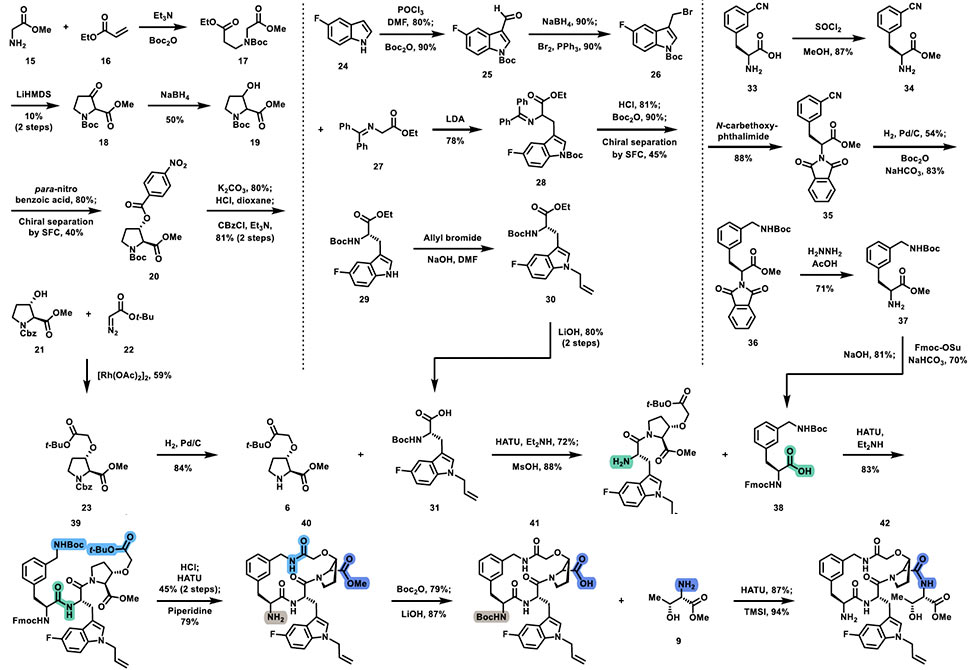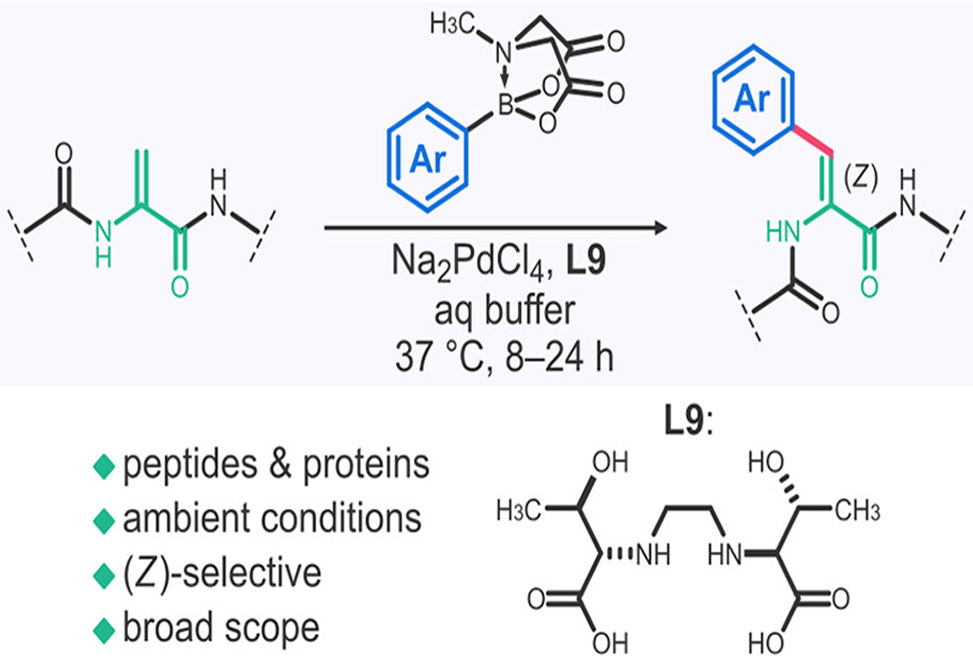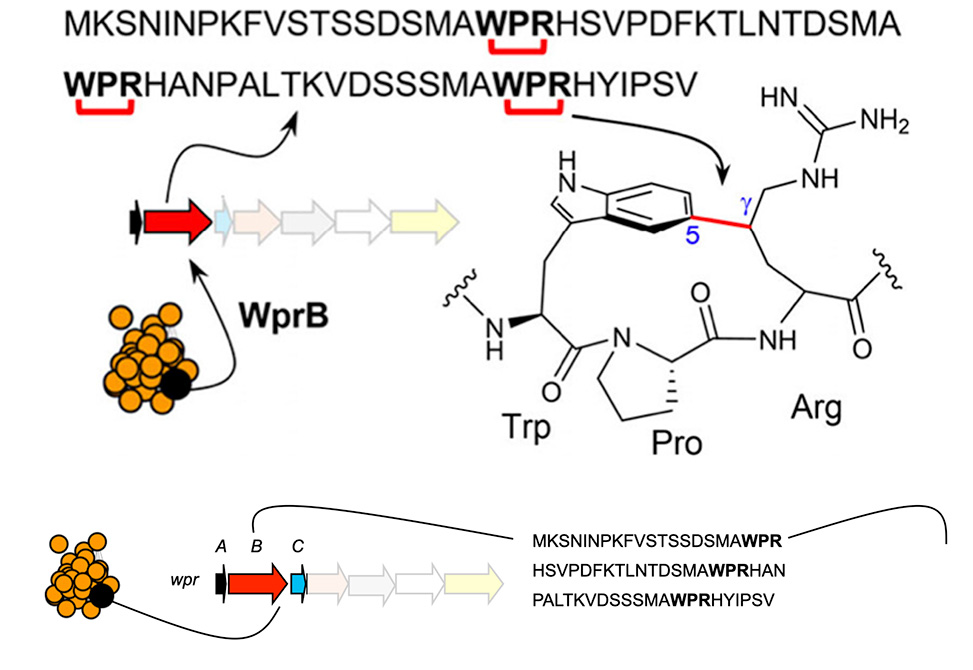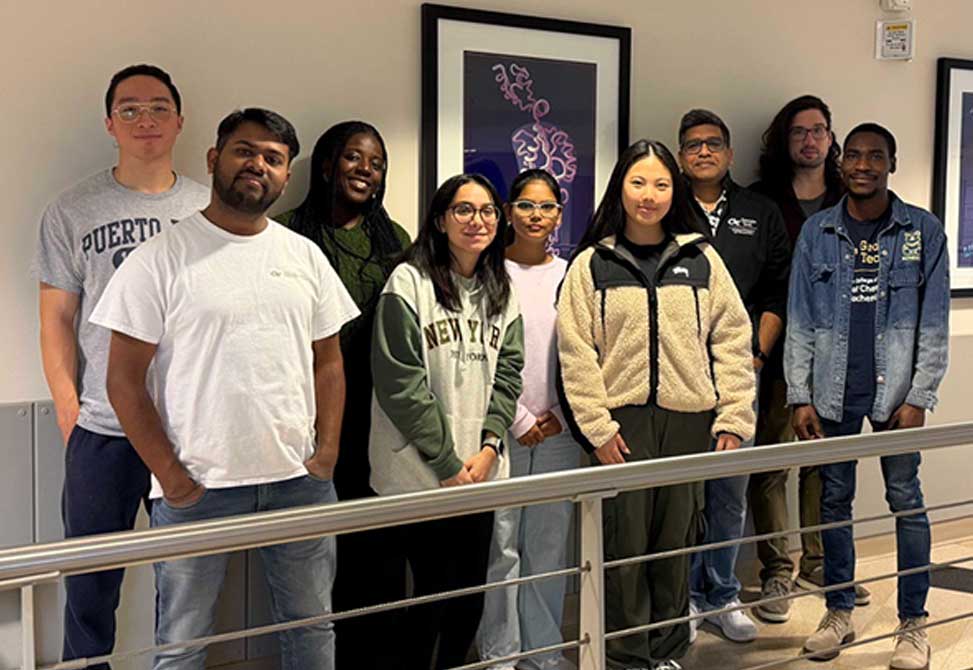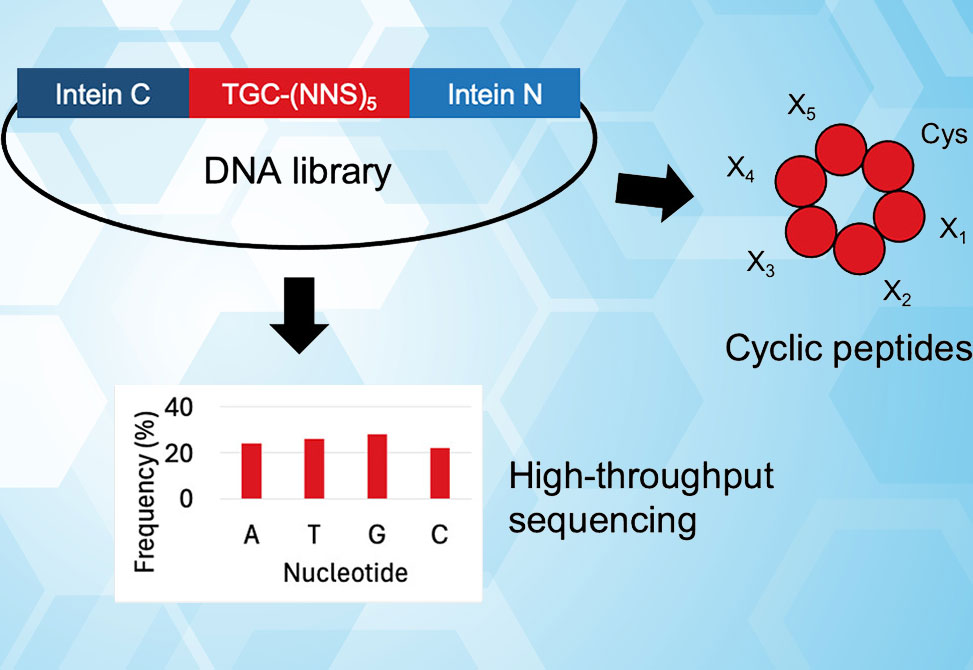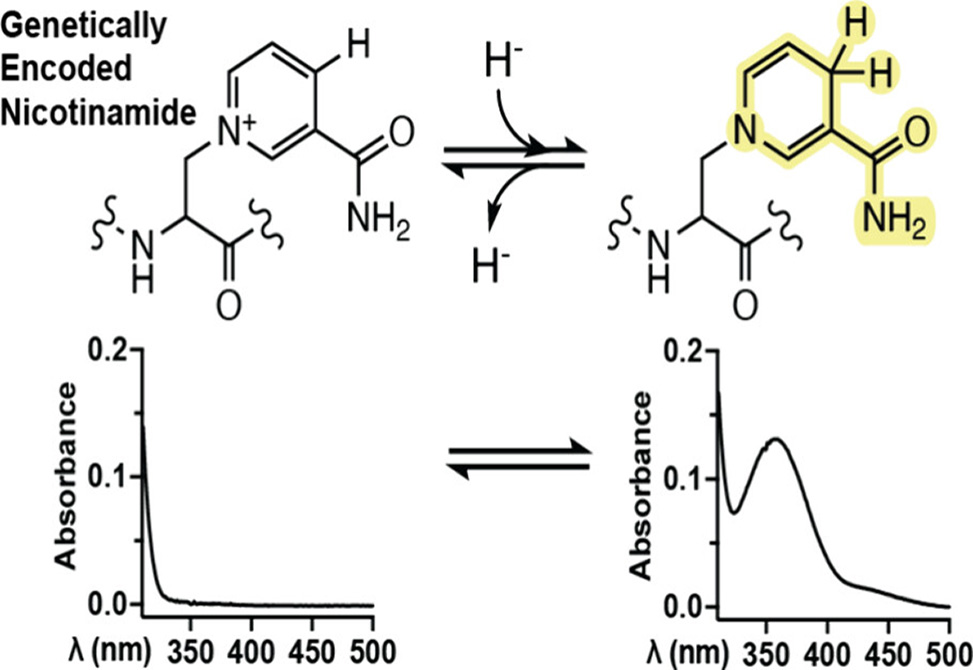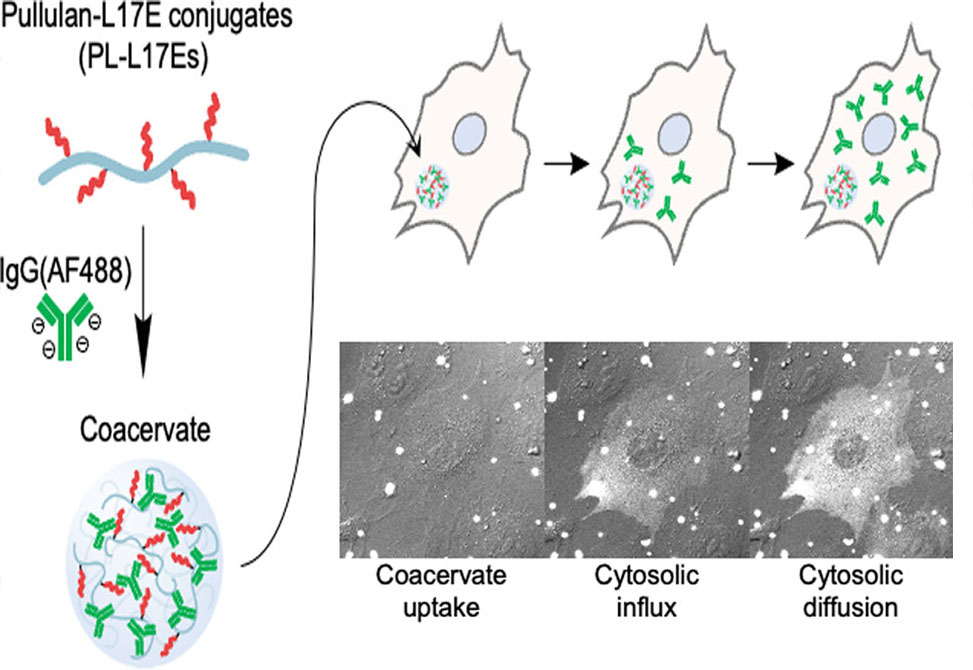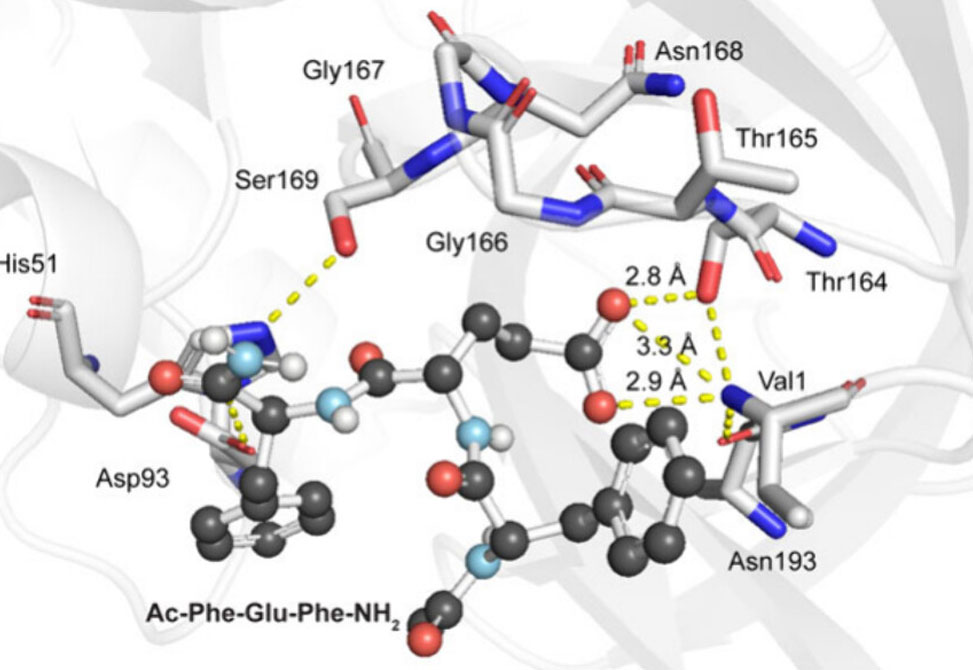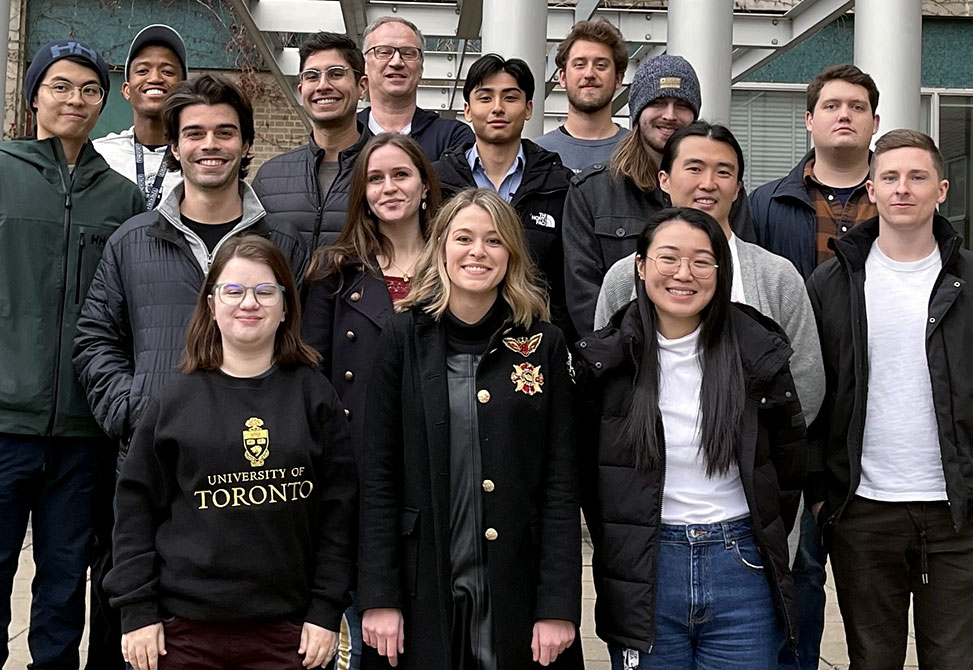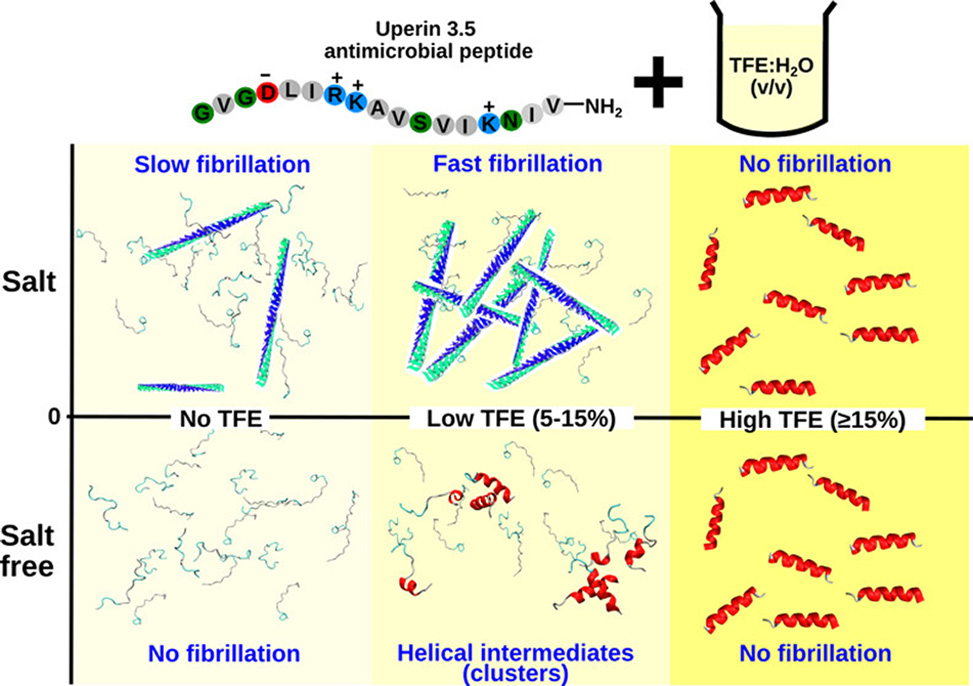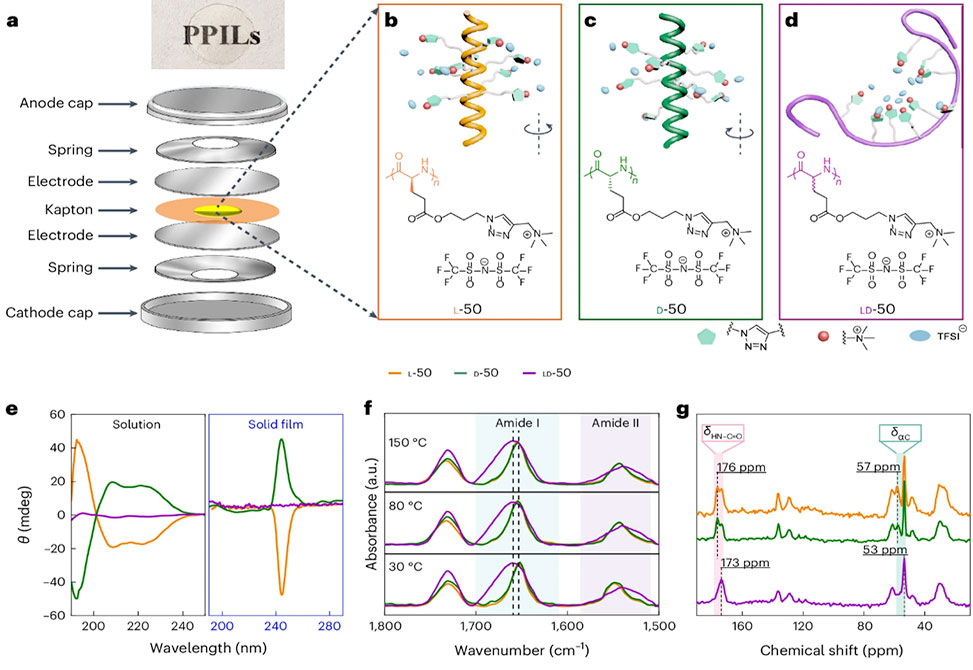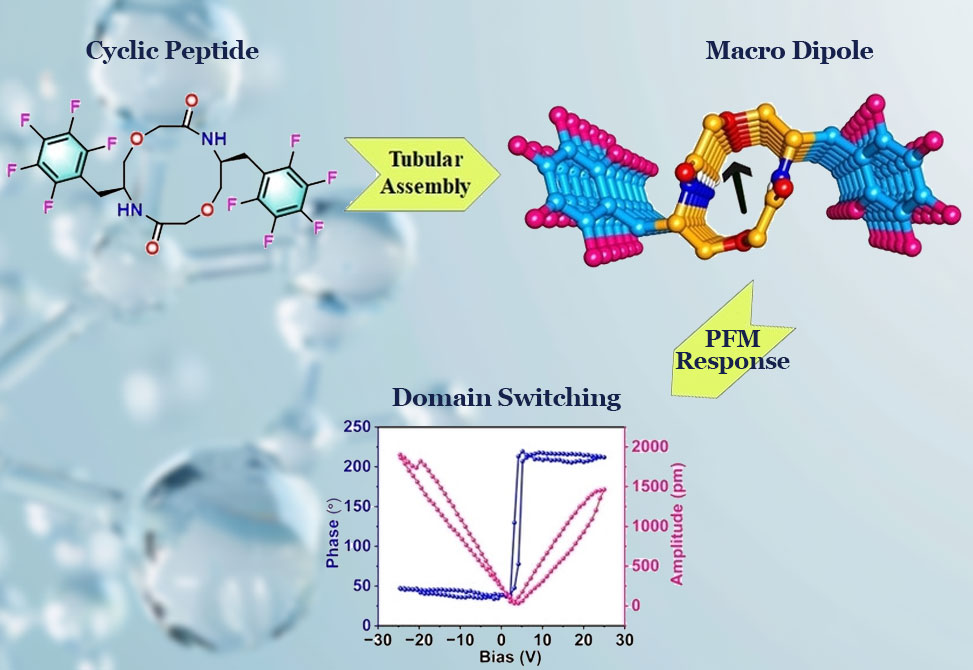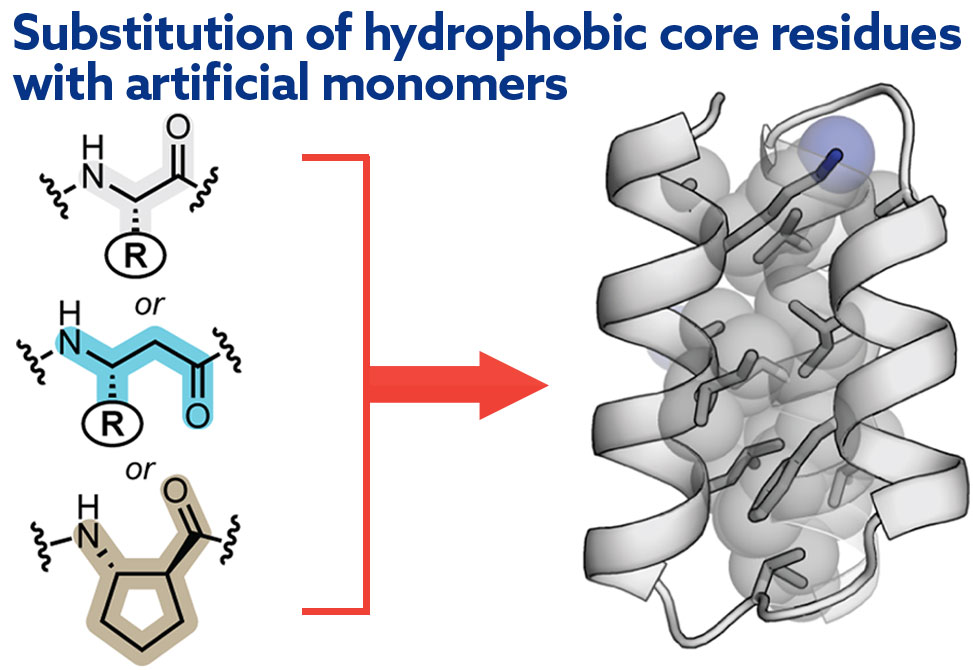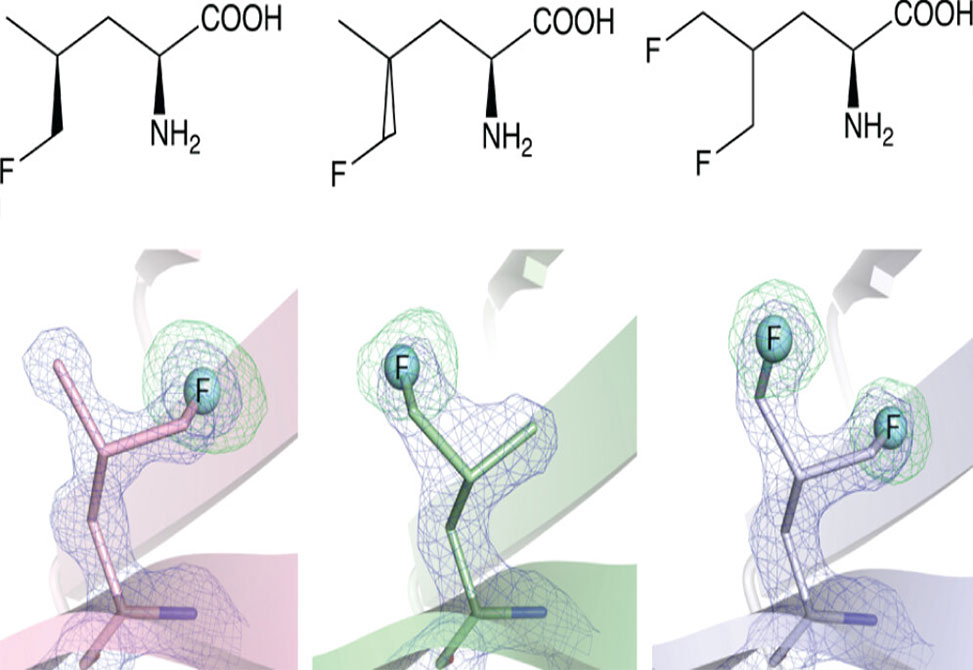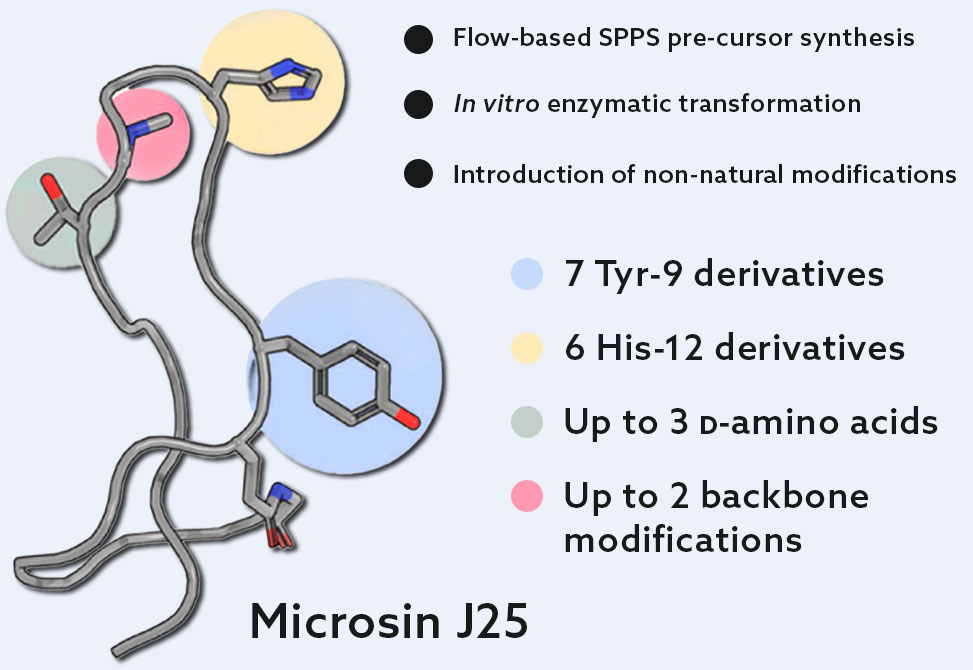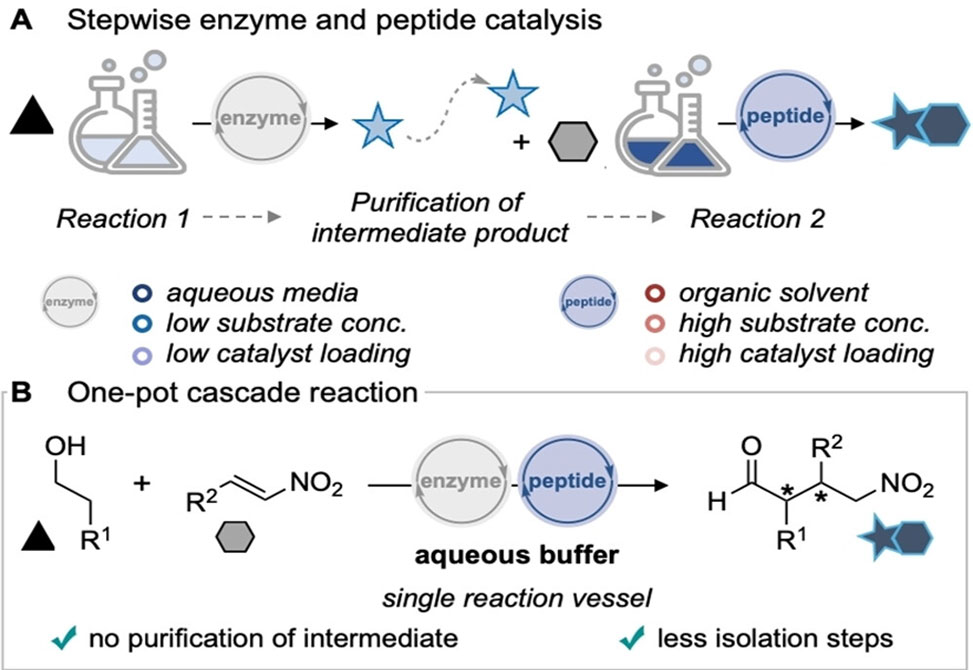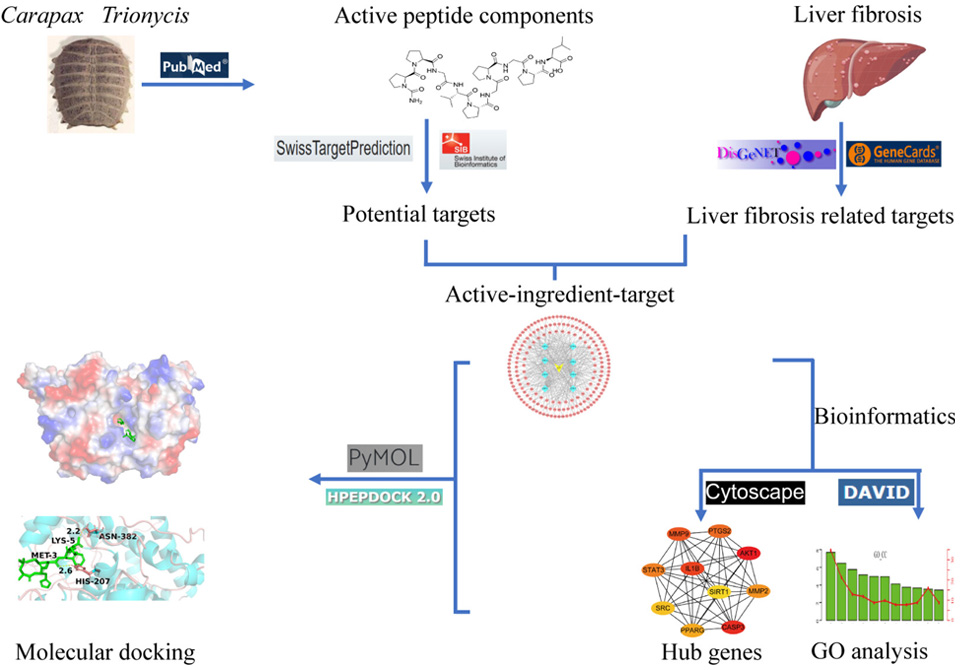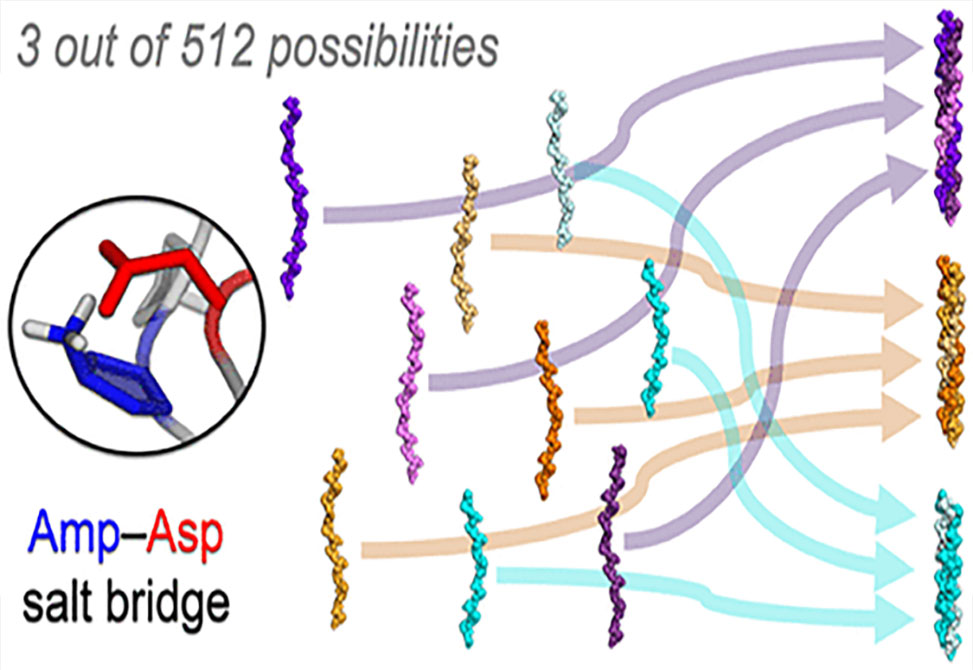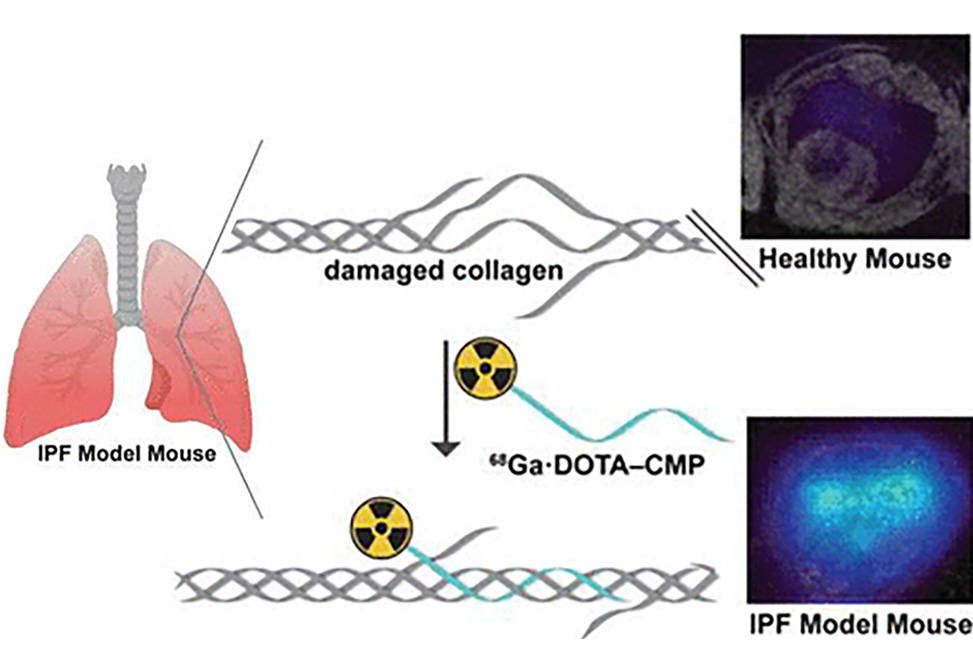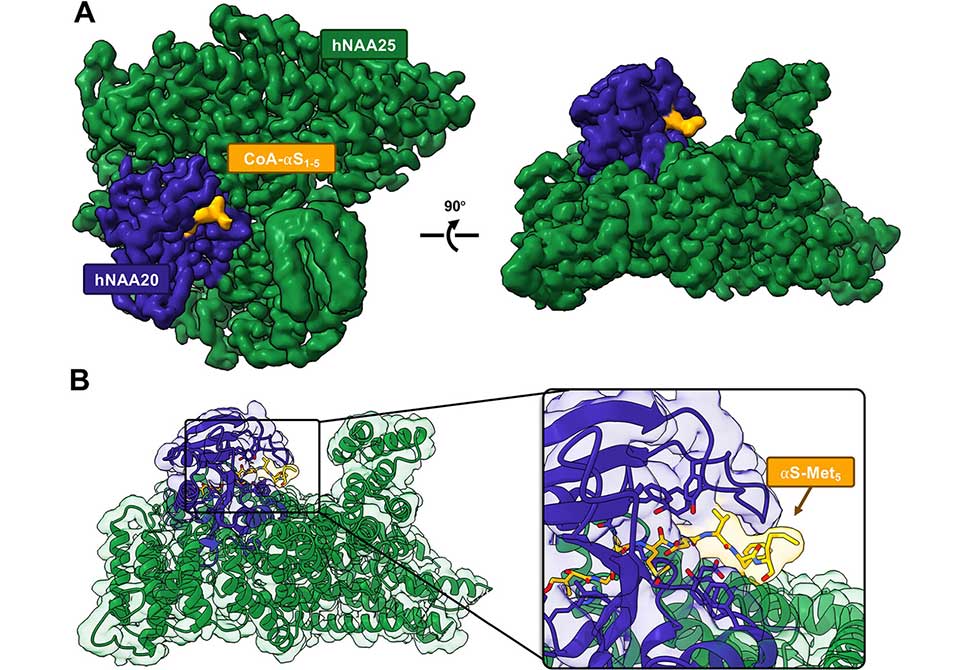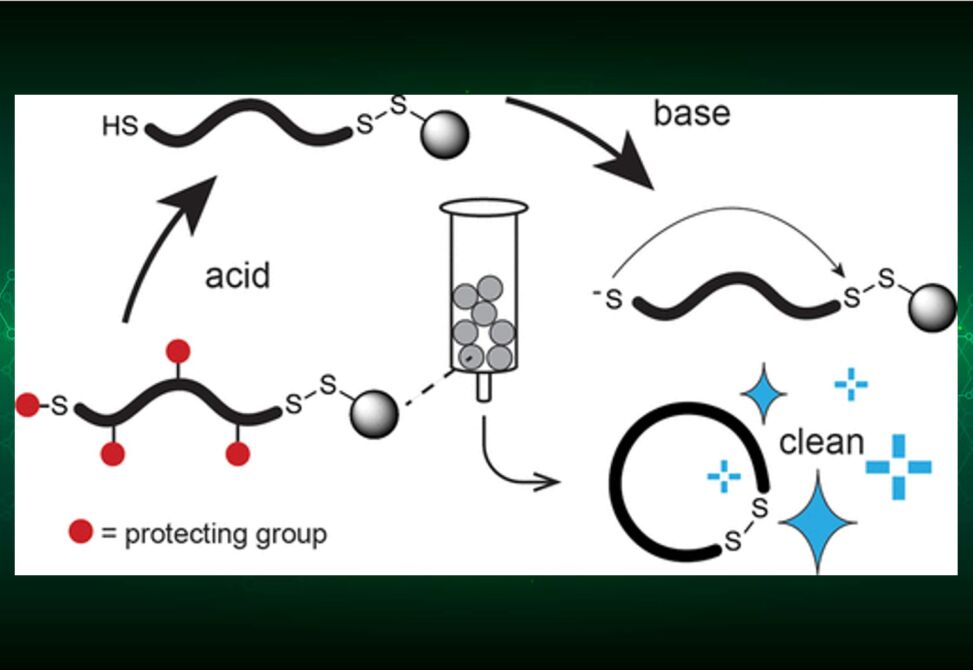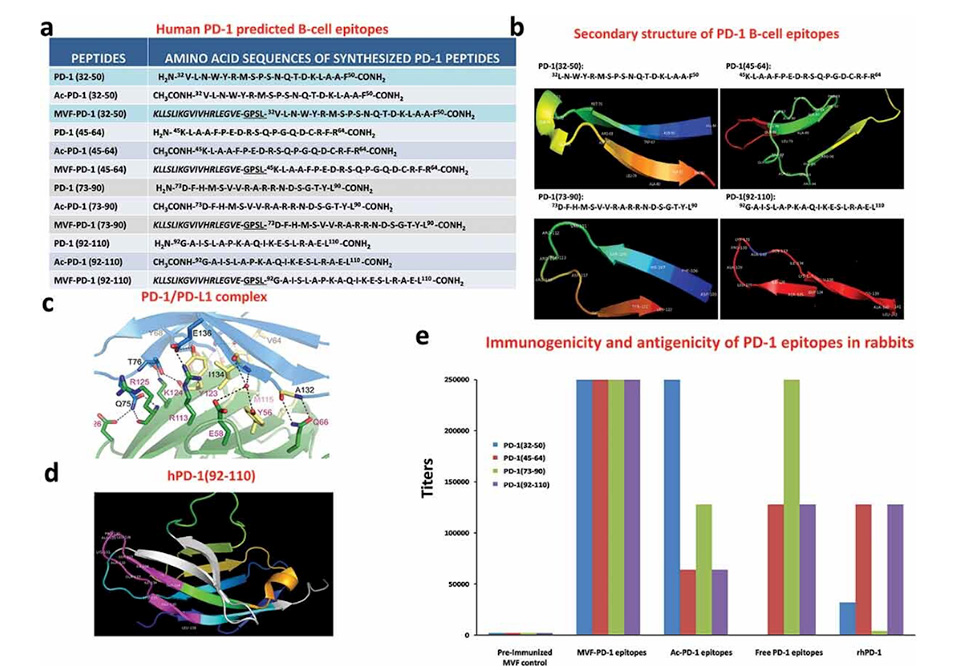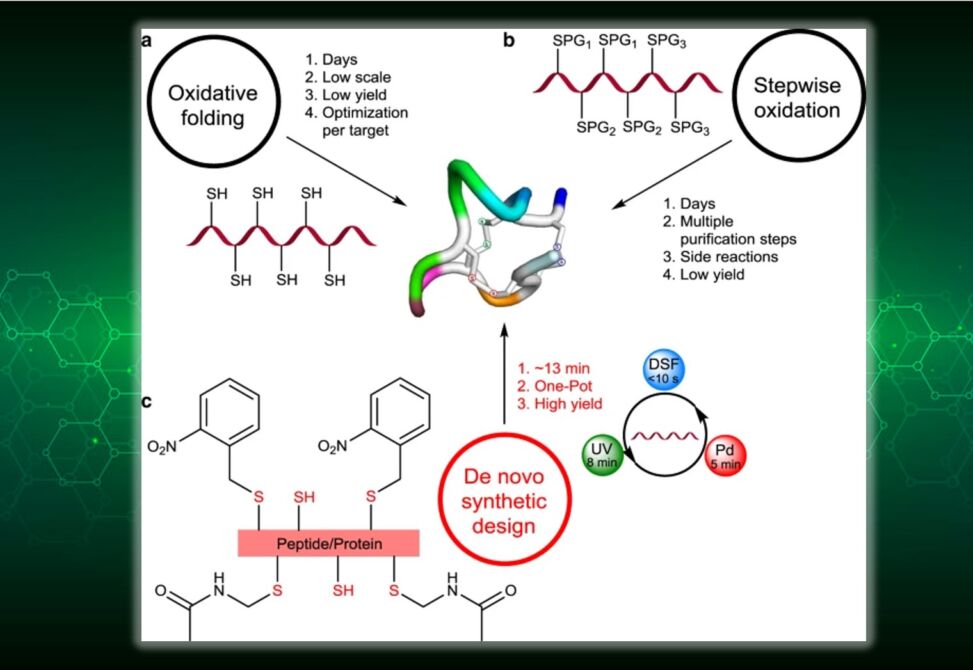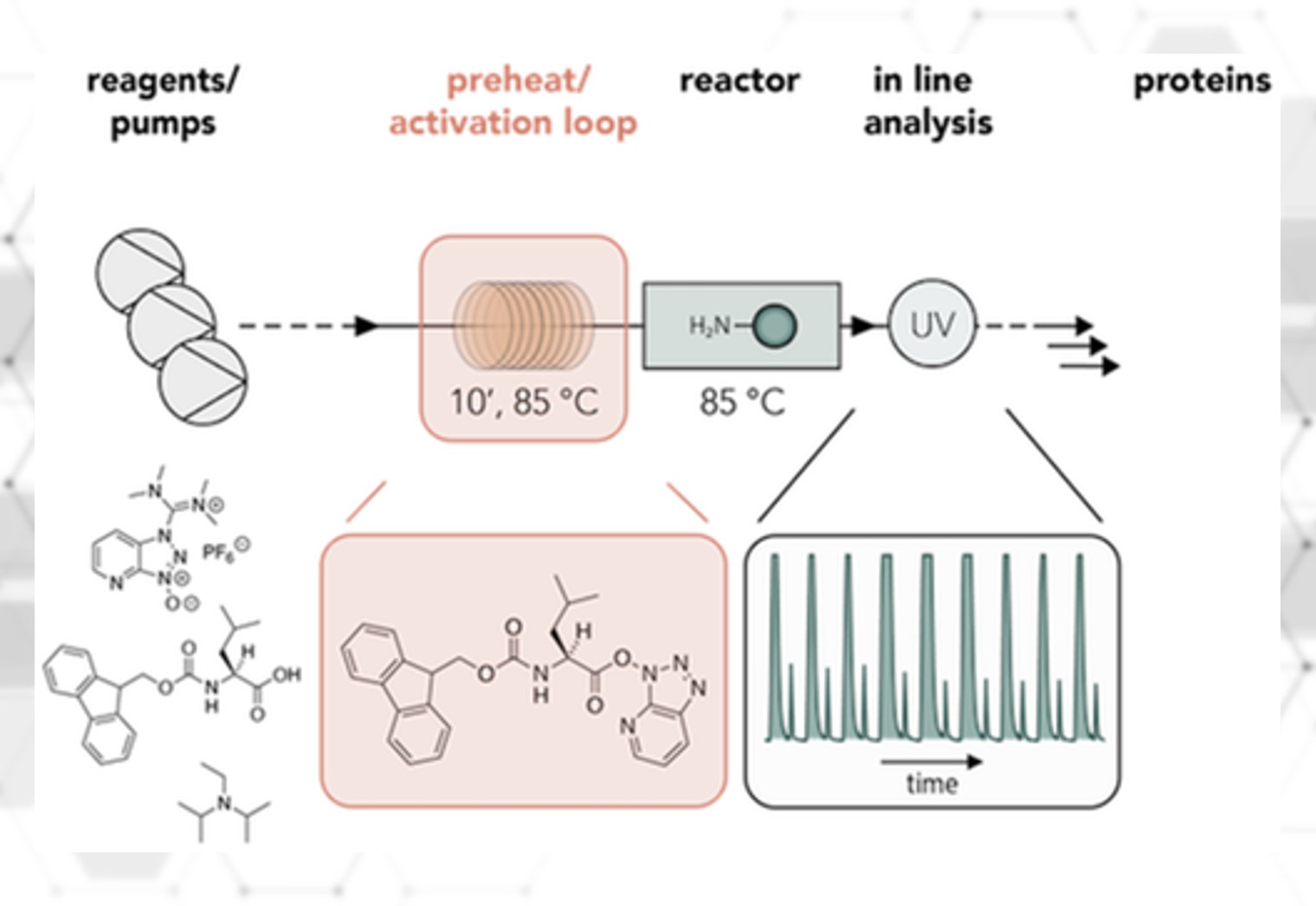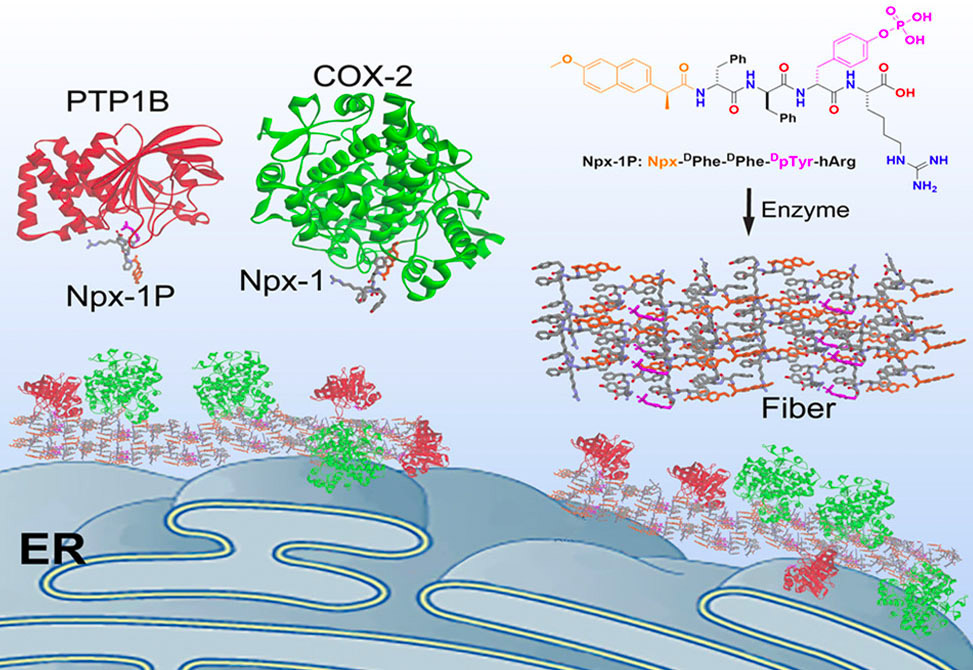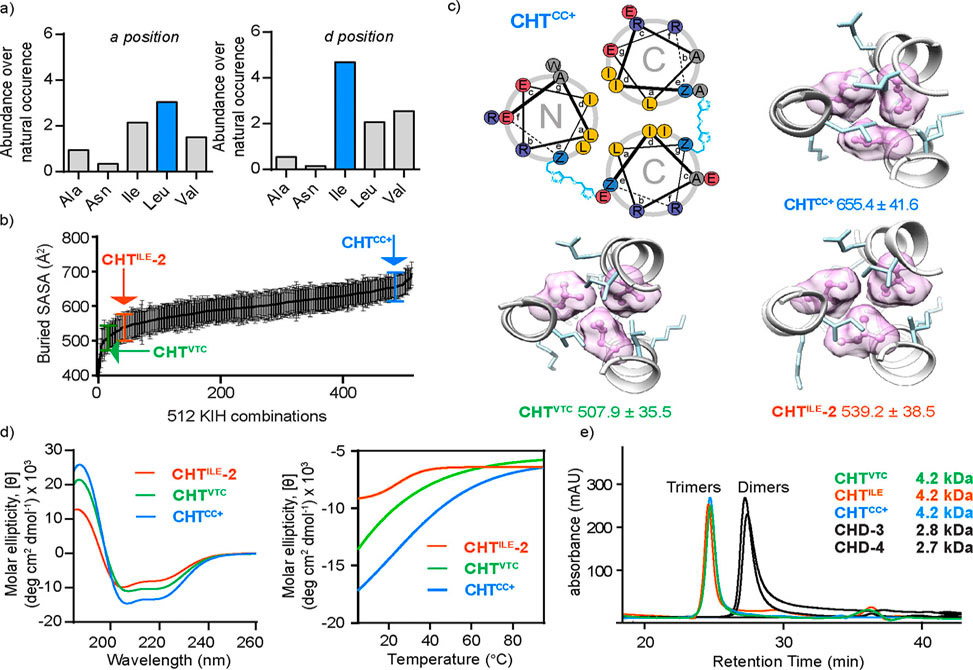News and Research Archive
Quorum Sensing
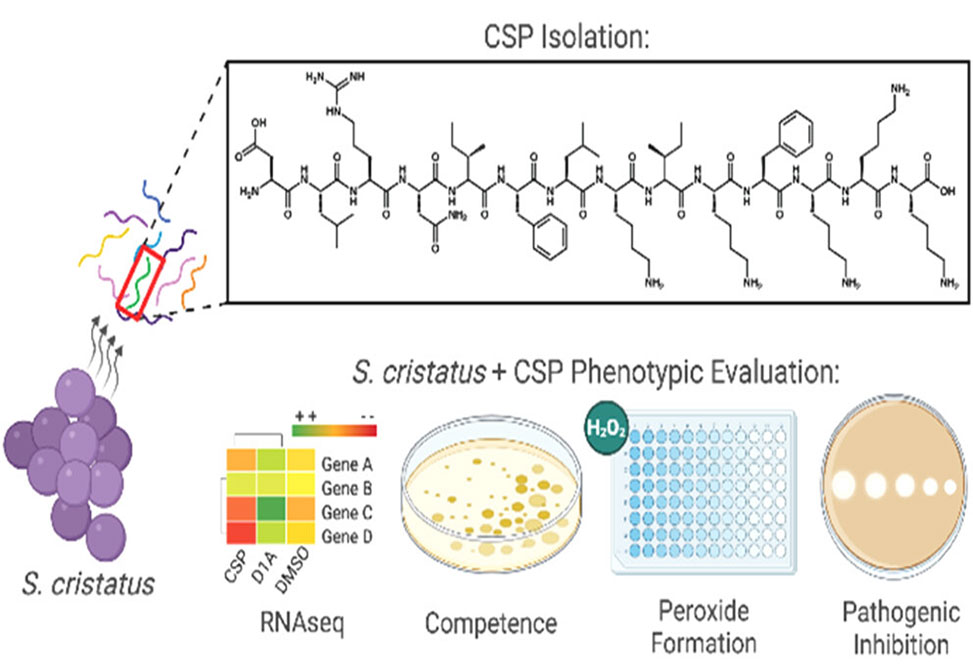
Reflecting recent work in the Tal-Gan lab
Streptococcus cristatus, a commensal member of the oral microbiota and recently reclassified from Streptococcus oligofermentans, has emerged as a promising candidate in the pursuit of biotherapeutics targeting oral pathogens. A comprehensive...
Molecular Scaffolds

Reflecting recent work in the Craik lab
This comprehensive review from the labs of David Craik and Lara Malins at Australian Research Council Centre of Excellence for Innovations in Peptide and Protein Science, at the University of Queensland, published in Biochemistry, highlights the powerful...
From Hydrogel to Crystal

Reflecting recent work in the Schneider lab
Published in the Journal of the American Chemical Society, researchers in the lab of Dr. Joel P. Schneider at NIH, have unveiled a groundbreaking molecular design strategy that shifts gel-forming peptides into the crystalline state...
Ubiquitin Azapeptide Esters

Reflecting recent work in the Liu lab
Published as an ASAP article in the Journal of the American Chemical Society, researchers from the Wenshe Liu Lab at Texas A&M, currenly our "Lab of the Month," present the development...
Versatile Precursors

Reflecting recent work in the Mitchell lab
Cyclopropane-containing amino acids, prized for their conformational rigidity and stability, are of increasing interest in therapeutic peptide development and antimicrobial drug discovery. A recent study from Nicholas Mitchell’s group at the University of Nottingham...
Sequence Architecture

Reflecting recent work in the Woolfson lab
The Woolfson Lab continues to break new ground in de novo protein design with the successful creation of mixed-charge A3B3 heterohexameric α-helical barrels, αHBs, assembled from distinct acidic, A, and basic, B, peptide chains. Drawing on...
Dynamic Ion Channels
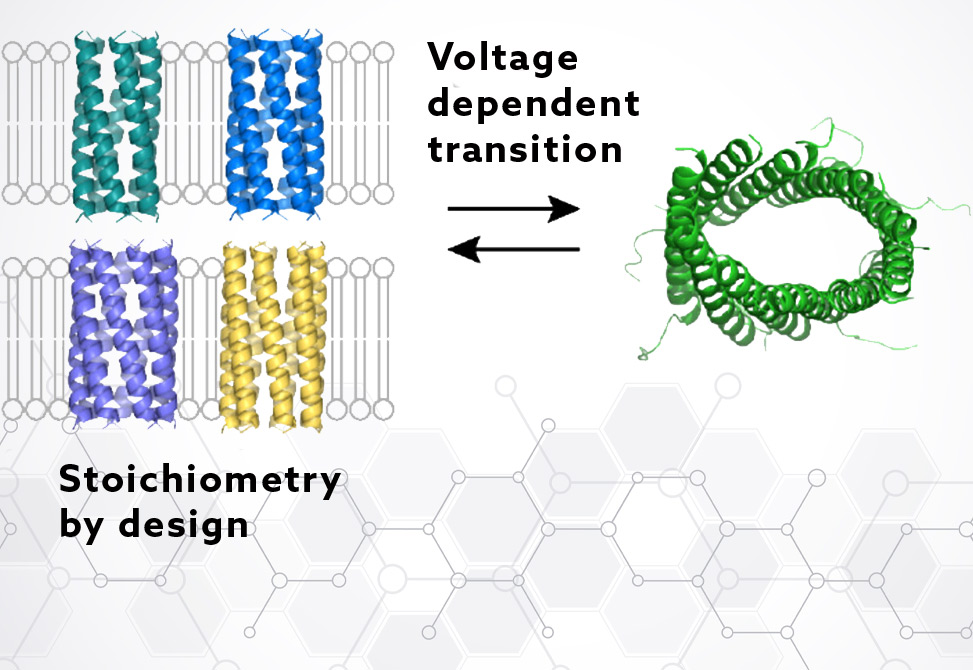
Reflecting recent work in the Niitsu lab
Membrane-spanning peptides that form ion-conductive channels remain a challenging frontier in de novo protein design. While strides have been made in creating water-soluble peptide assemblies, translating that precision to transmembrane systems...
Antimicrobial Peptide

Reflecting recent work in the D'Amelio lab
As antibiotic resistance surges worldwide, the search for effective new therapeutics has led scientists to a surprising source: the venom of Bungarus fasciatus, the banded krait. From this venom, researchers have isolated Cathelicidin-BF...
Protein Design
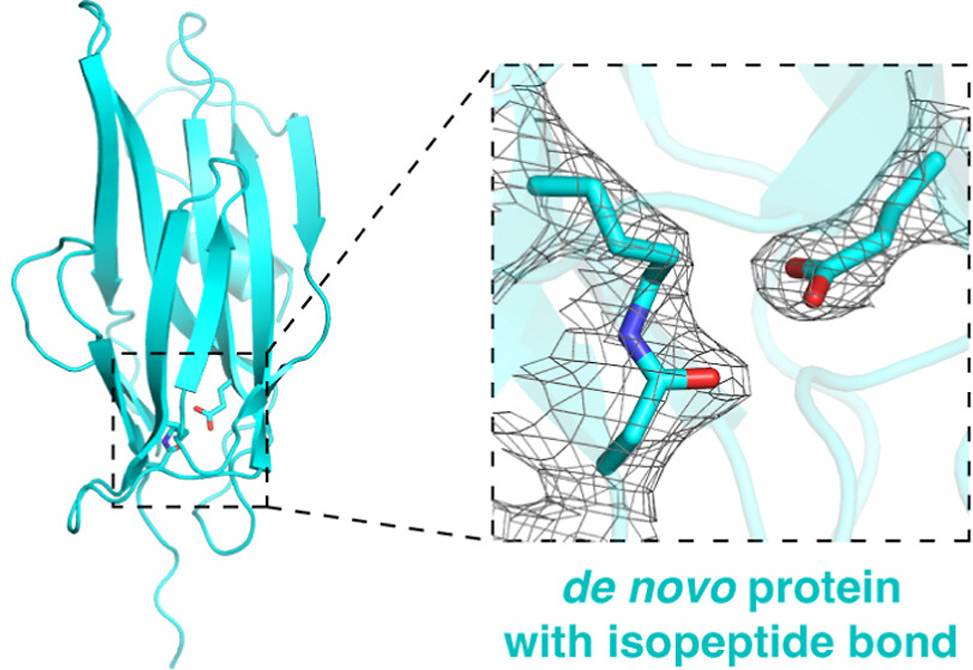
Reflecting recent work in the Tezcan lab
Isopeptide bonds, IPBs, — covalent linkages between the side chains of lysine and asparagine/glutamine or aspartate/glutamate — are remarkable for their chemical resilience and structural significance...
Electrophilic Warheads
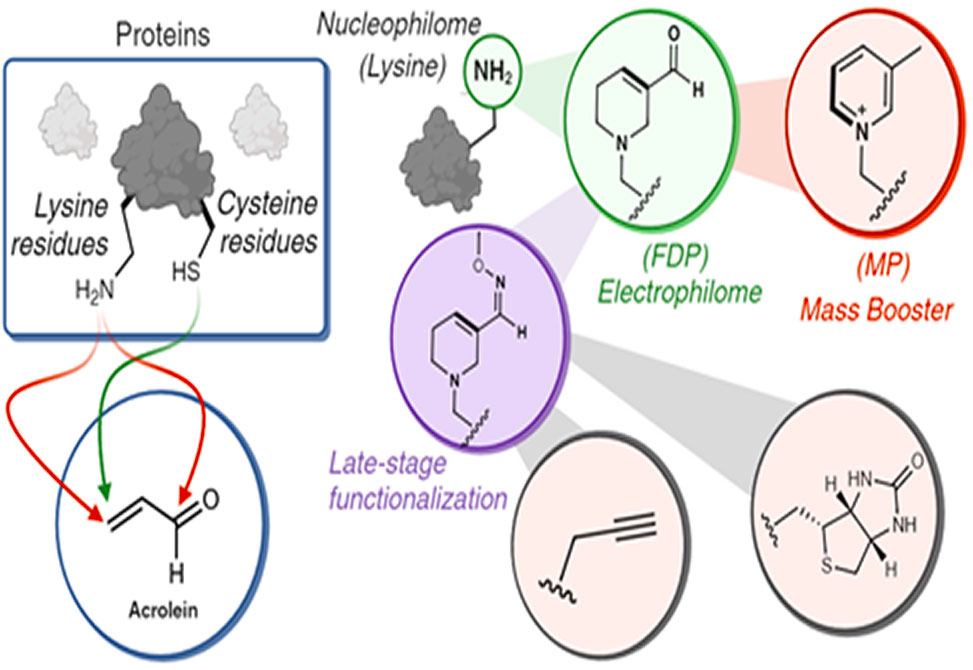
Reflecting recent work in the lab
Understanding how proteins interact with biological metabolites is crucial for deciphering biological processes and advancing therapeutic strategies. This study focuses on a specific class of metabolites—α,β-unsaturated carbonyls, particularly acrolein-derived...
Vesicle Inversion

Reflecting recent work in the Deming lab
Self-assembled polymeric vesicles that respond to biologically relevant stimuli have significant potential in drug delivery and synthetic biology. While many stimuli-responsive assemblies disassemble upon activation, invertible vesicles...
Synthesis Tag

Reflecting recent work in the Hartrampf lab
Solid-phase peptide synthesis, SPPS, and native chemical ligation, NCL, are powerful methods for obtaining peptides and proteins that are otherwise inaccessible...
Vancomycin–Teixobactin
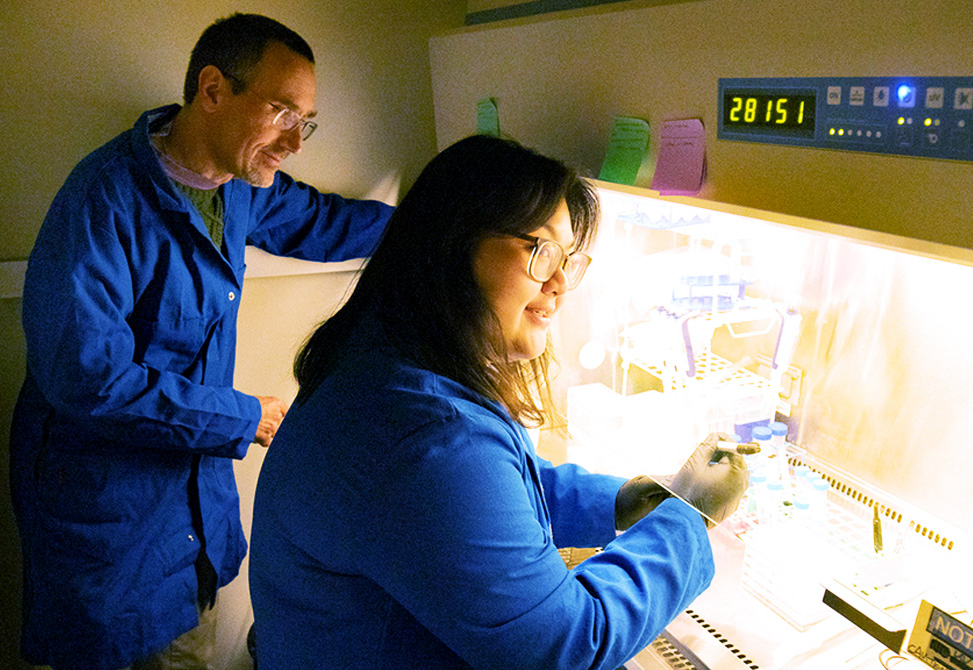
Reflecting recent work in the Nowick lab
Vancomycin, a cornerstone antibiotic for Gram-positive infections, faces diminishing efficacy due to the emergence of vancomycin-resistant Enterococci, VRE, and vancomycin-resistant...
Super-Res Microscopy

Reflecting recent work in the Guha lab
Researchers in the Samit Guha Group at Jadavpur University, Kolkata, India, published in Bioconjugate Chemistry, report a groundbreaking approach to cancer imaging...
Selective Cyclization
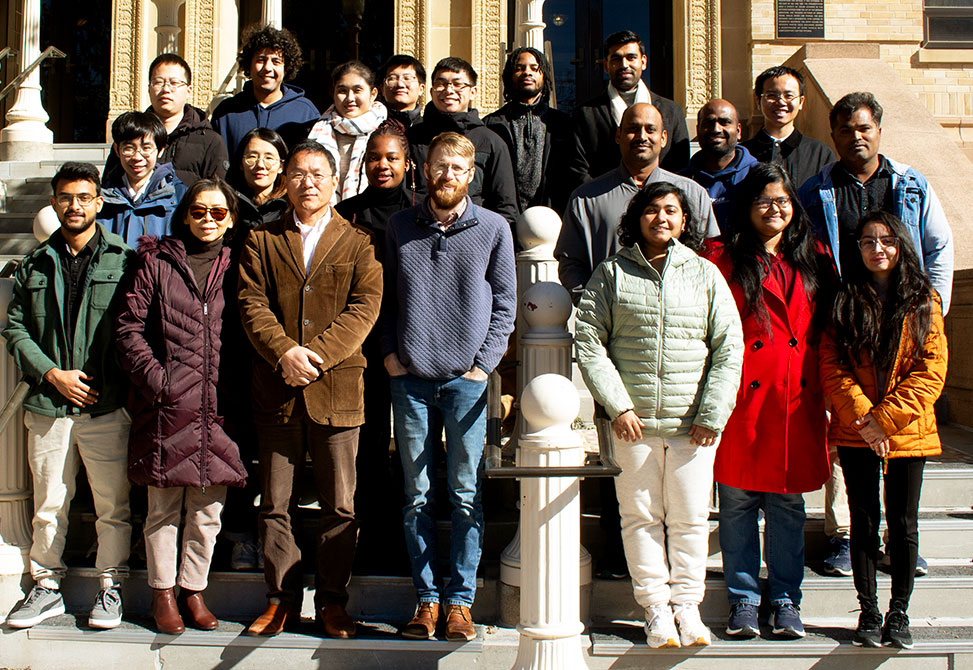
Reflecting recent work in the Liu lab
To address the limitations of current methods for peptide macrocyclization, which often rely on nonspecific small-molecule linkers...
Metallo-Azapeptides

Reflecting recent work in the Proulx lab
Published in the Journal of the American Chemical Society, researchers in the Proulx group at the North Carolina State University at Raleigh, present the first approach to controlled metal chelation of peptide backbones...
Graspetides
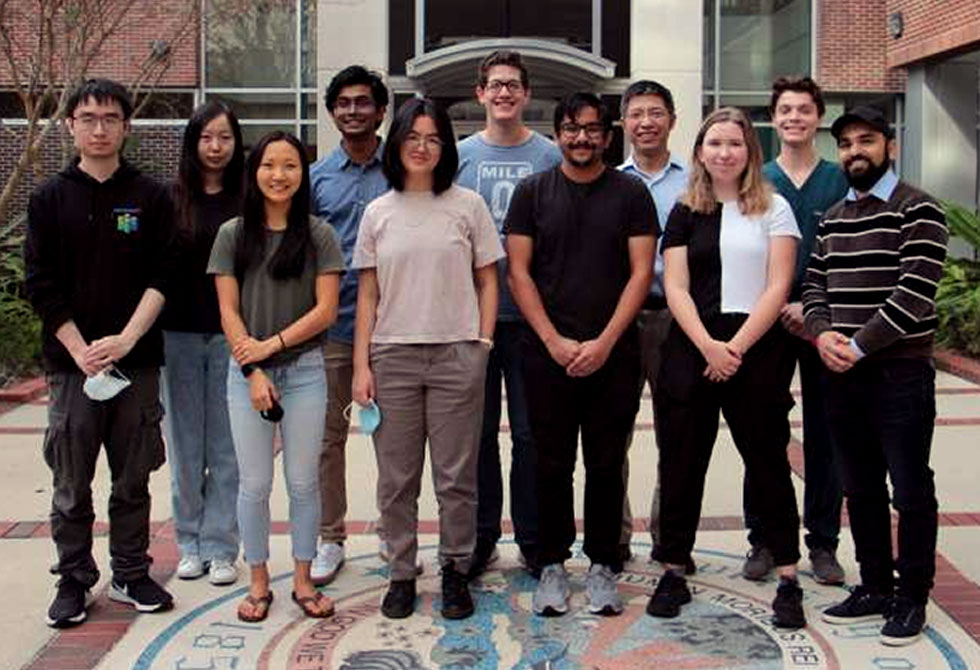
Reflecting recent work in the Ding lab
Published in ACS Chemical Biology, researchers in the Ding Group at the University of Florida, reconstructed prunipeptin biosynthesis from Streptomyces coelicolor...
Biomolecular Condensates
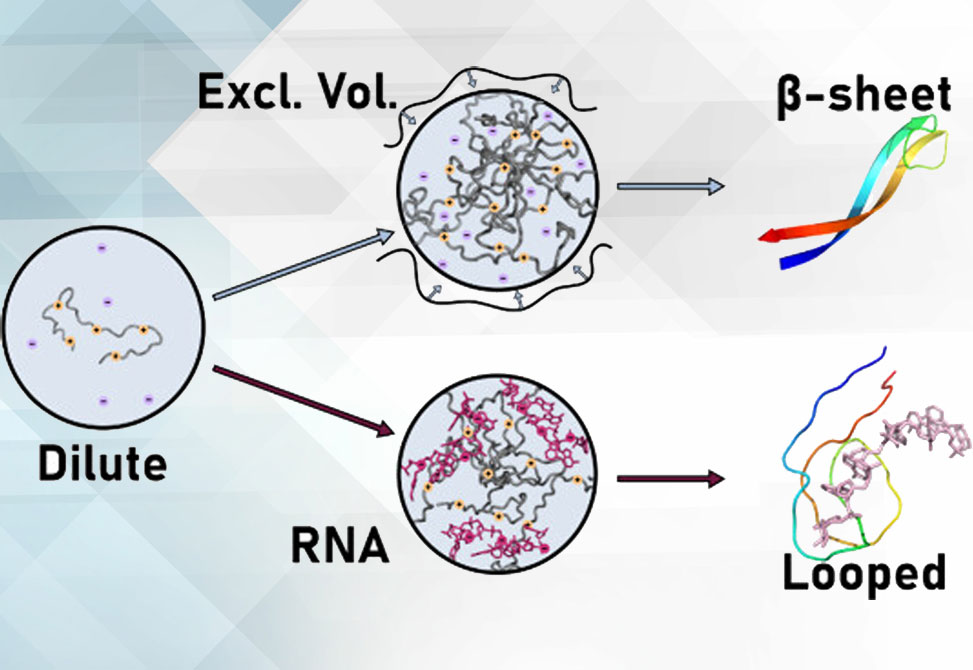
Reflecting recent work in the Baiz lab
Biomolecular condensates provide a mechanism for compartmentalization of biomolecules in eukaryotic cells. These liquid-like condensates are formed via liquid–liquid phase separation
Cyclodepsipeptides
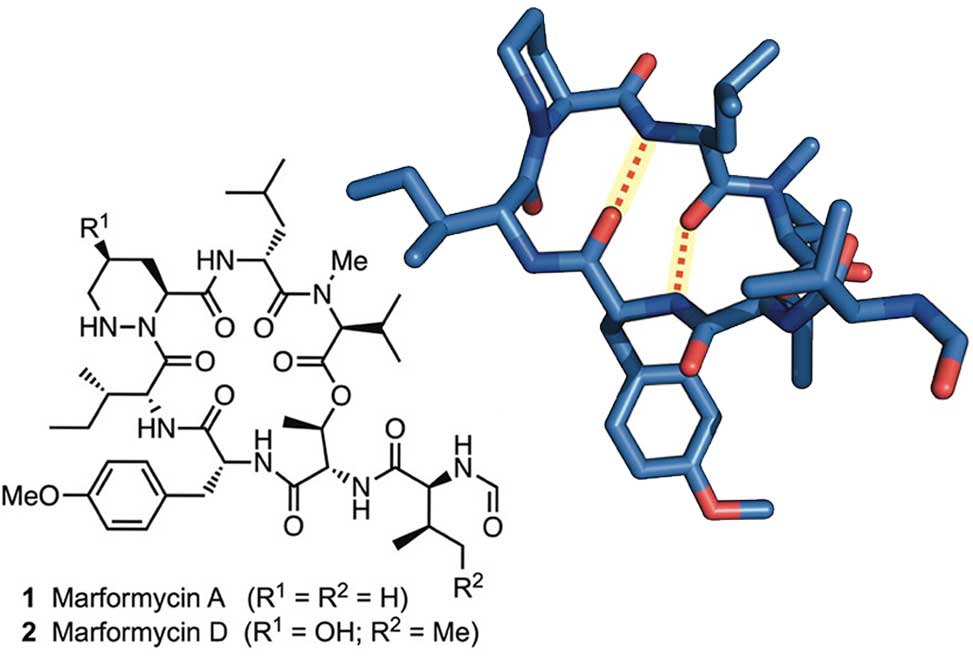
Reflecting recent work in the Del Valle lab
Members of the Del Valle Group at the University of Notre Dame, in collaboration with the Ebright Group at Rutgers, report in Organic letters, the synthesis of the antimicrobial cyclodepsipeptides...
Anorexia and Weight Loss
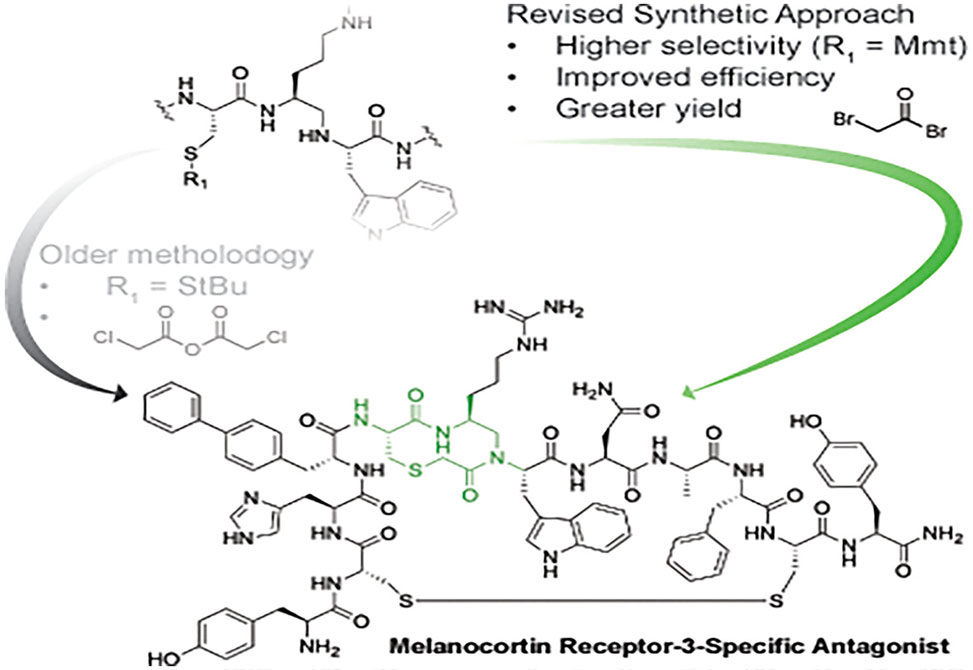
Reflecting recent work in the Mapp lab
The melanocortin-3 receptor, MC3R, is a G-protein coupled receptor that regulates appetite and is a potential therapeutic target for anorexia and weight loss treatments...
Macrocyclic Peptide Ligands
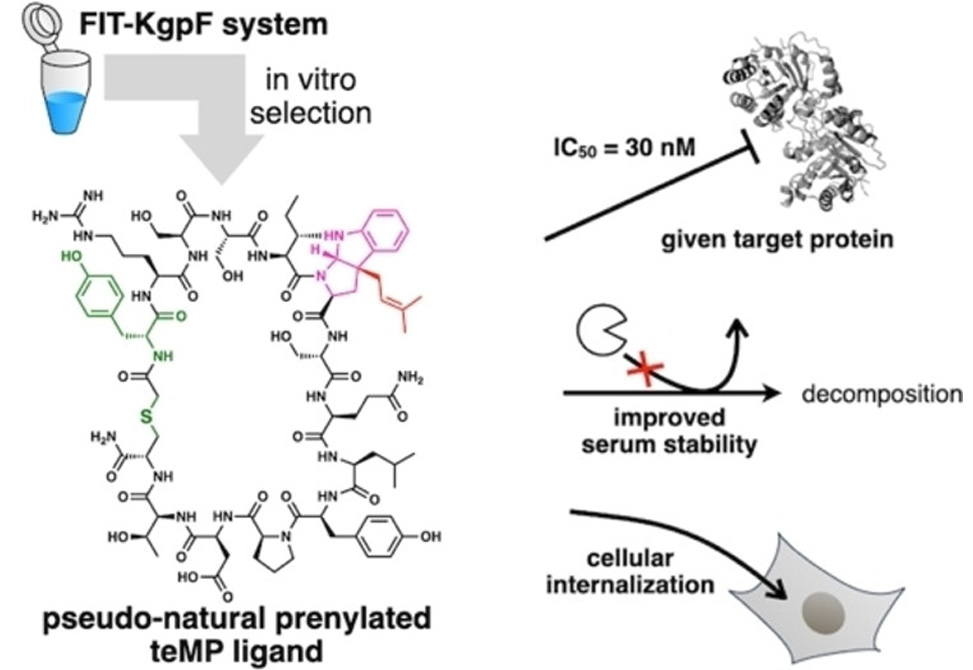
Reflecting recent work in the Suga lab
Prenylation of peptides is widely observed in the secondary metabolites of diverse organisms, granting peptides unique chemical properties distinct from proteinogenic amino acids. Discovery of...
Highly Active & Stable Peptides

Reflecting recent work in the Suga lab
Nonproteinogenic amino acids, including D-α-, β-, and γ-amino acids, present in bioactive peptides play pivotal roles in their biochemical activities and proteolytic stabilities...
Antimicrobial Peptides
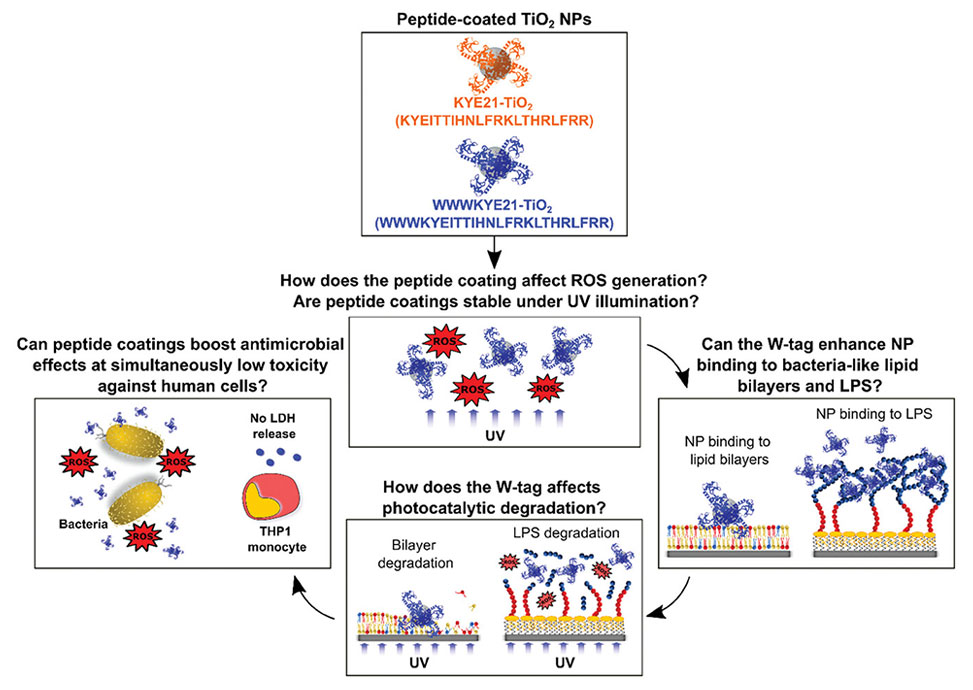
Reflecting recent work in the Malmsten lab
Published in Advanced Functional Materials, work by members of the Martin Malmsten group at the University of Lund, Sweden, explores the coating of photocatalytic nanoparticles with antimicrobial peptides...
"PickaPep" Application

Reflecting recent work in the Steuer lab
Published in Peptide Science, the Steuer Group at ETH, Zūrich, presents "PICKAPEP," an application developed for Mac and Windows, enabling the virtual construction...
Infrared Scattering

Reflecting recent work in the Voigt lab
Natural melanin polymers, biosynthesized from free tyrosine, assemble into microstructures that interact with light, producing a wide range of photonic properties. These structures...
Polarized Luminescence

Reflecting recent work in the Bhattacharya lab
Circularly polarized luminescence, CPL, is gaining interest across various disciplines, including materials science, pharmaceuticals, and sensing technologies. Organic molecules...
Self-Healable Composites

Reflecting recent work in the Pal lab
Crystalline materials exhibiting non-centrosymmetry and possessing substantial surface dipole moments play a critical role in piezoelectricity. Designing biocompatible self-assembled materials...
Solid-Phase Synthesis
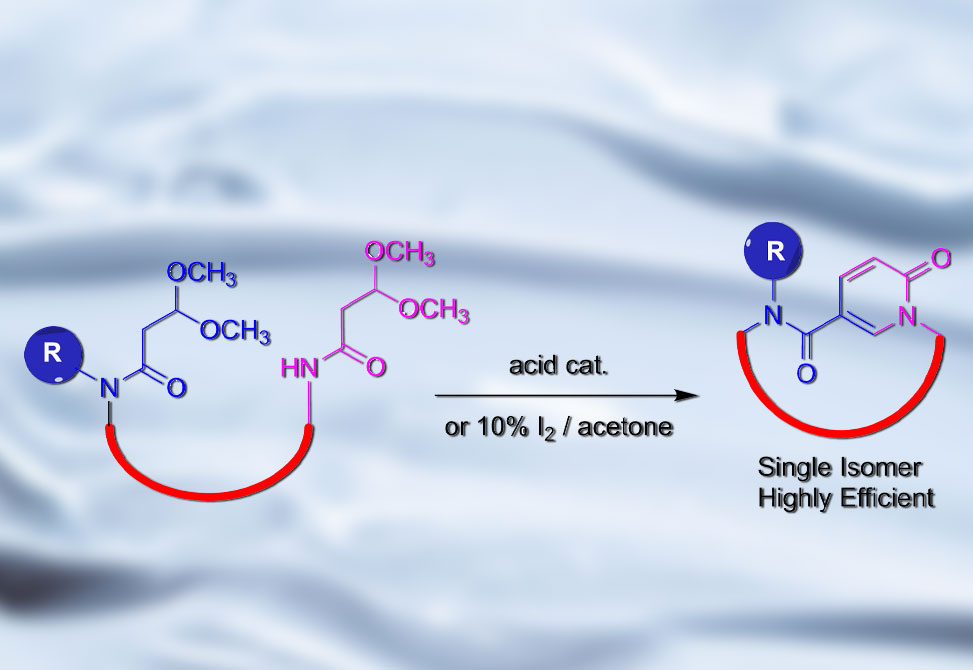
Reflecting recent work in the Kodadek lab
Many disease-causing proteins lack deep, readily ligandable pockets. Macrocyclic peptides and peptidomimetic compounds are one class of molecules that have shown promise in engaging these...
Bicyclic Helical Peptides

Reflecting recent work in the Grossmann lab
The inhibition of intracellular protein-protein interactions is challenging, in particular, when involved interfaces lack pronounced cavities. The transcriptional co-activator protein...
Antihapten Antibodies
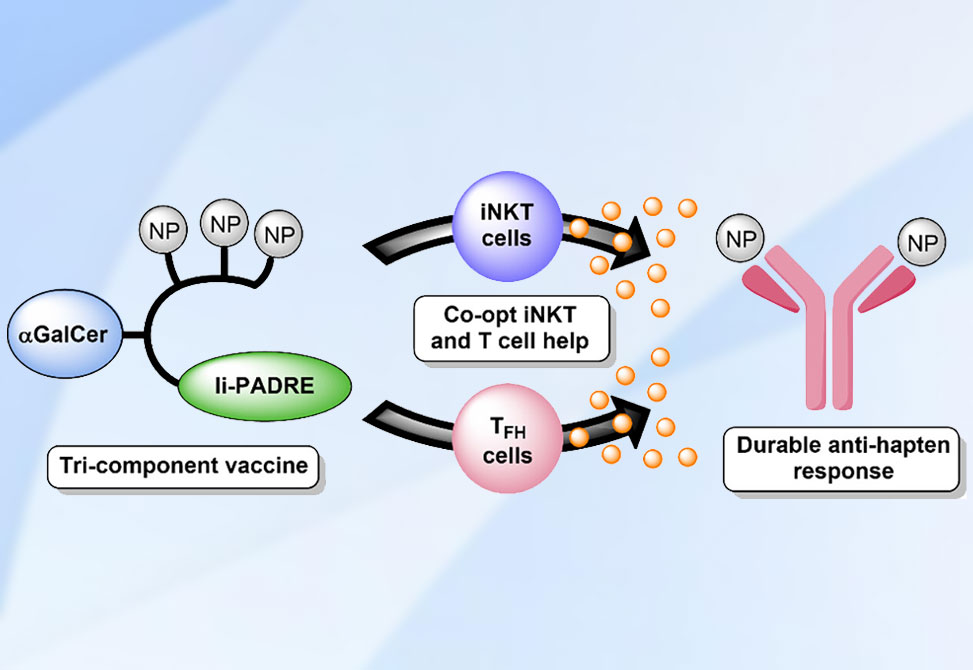
Reflecting recent work in the Compton lab
Eliciting an antihapten antibody response to vaccination typically requires the use of constructs where multiple copies of the hapten are covalently attached to a larger carrier molecule...
Defining the Limits

Reflecting recent work in the Jongkees lab
Messenger RNA, mRNA, display is being increasingly adopted for peptide drug candidate discovery. While many conditions have been reported for the affinity enrichment step and in some cases...
Macrocyclic Peptides

Reflecting recent work in the Kodadek lab
Macrocyclic peptides, MPs, are a class of compounds that have been shown to be particularly well suited for engaging difficult protein targets. However, their utility...
Peptide Receptors
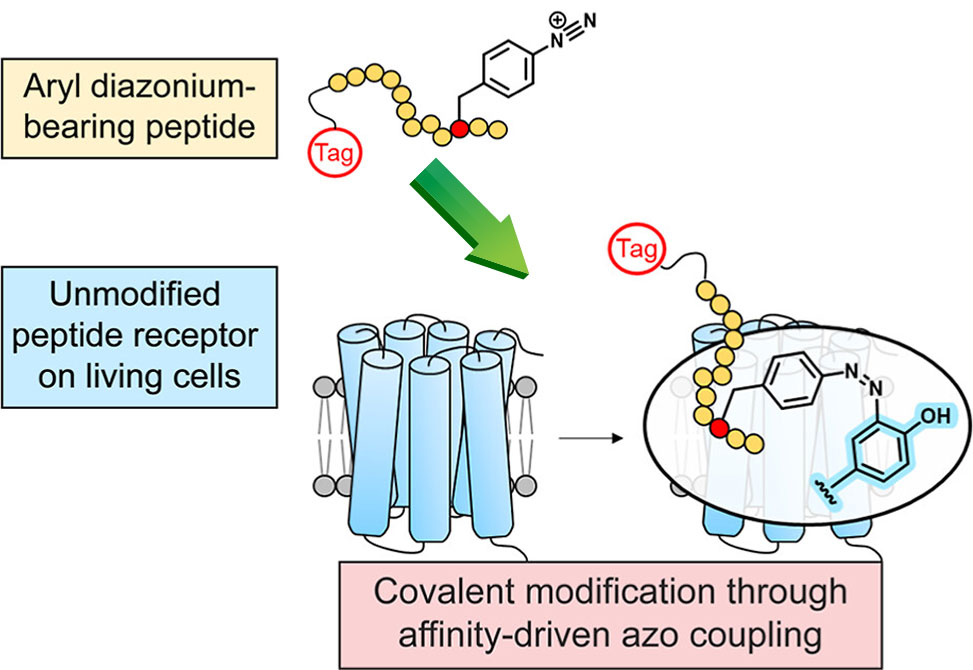
Reflecting recent work in the Checco lab
Peptide–receptor interactions play critical roles in a wide variety of physiological processes. Methods to link bioactive peptides covalently to unmodified receptors...
Triceptide Biocatalysts

Reflecting recent work in the Morinaka lab
Triceptides are a class of ribosomally synthesized and post-translationally modified peptides defined by an aromatic C(sp2) to Cβ(sp3) bond...
Ephrin Receptors

Reflecting recent work in the Sawyer lab
Ephrin, Eph, receptors are the largest family of receptor tyrosine kinases. Interactions between Eph receptors and their membrane-bound ephrin protein ligands are...
Custom Click Biochemistry
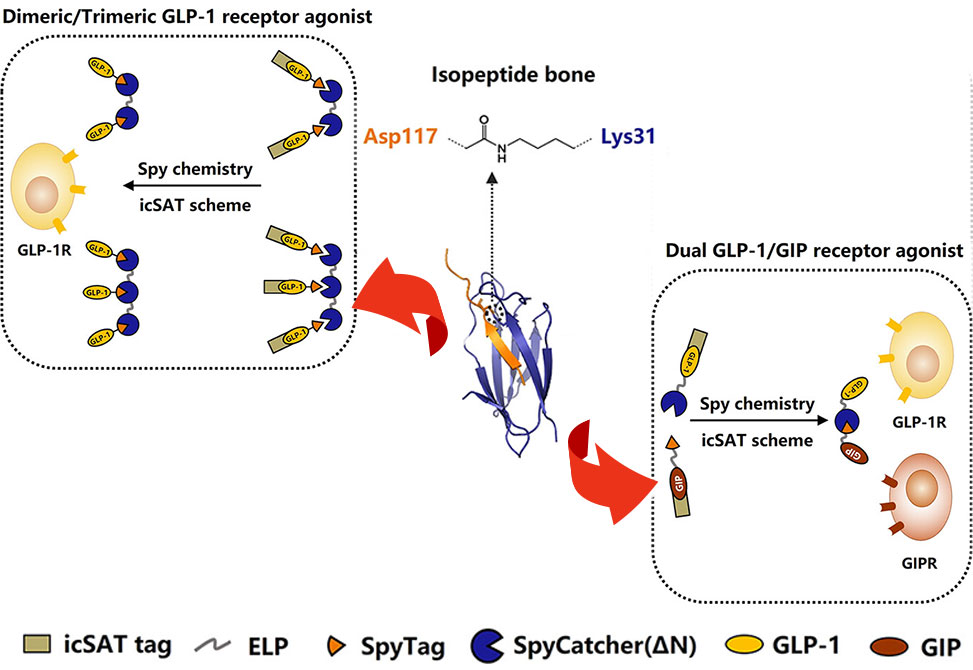
Reflecting recent work in the Yang lab
The development of oligomeric glucagon-like peptide-1, GLP-1, and GLP-1-containing coagonists holds promise for enhancing the therapeutic potential of the GLP-1-based drugs...
CGRP-Responsive Receptor
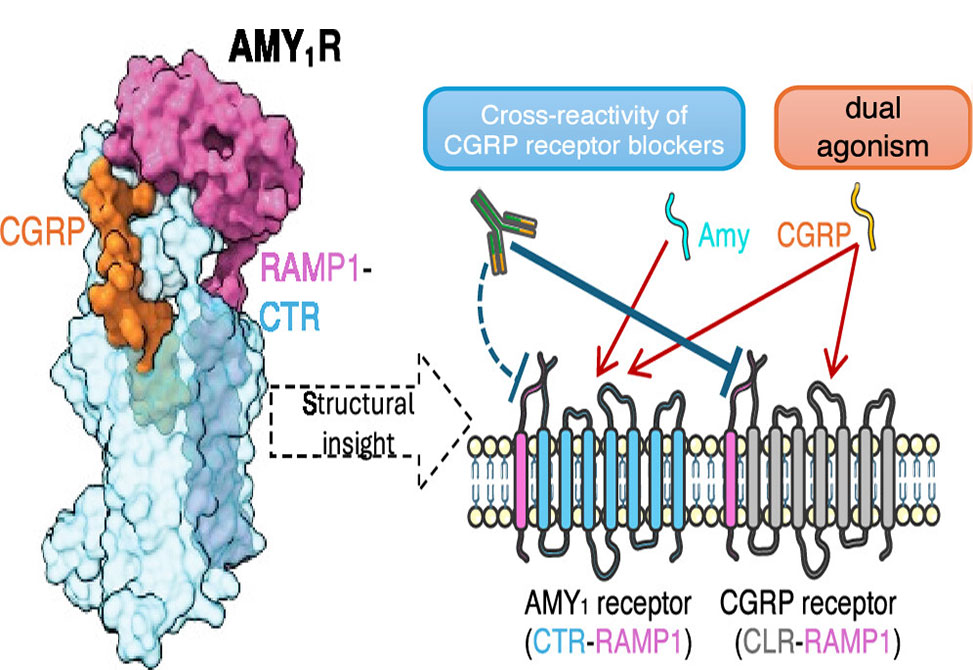
Reflecting recent work in the Sexton lab
Inhibition of calcitonin gene-related peptide, CGRP, or its cognate CGRP receptor, CGRPR, has arisen as a major breakthrough in the treatment...
Peptide Imidazolones
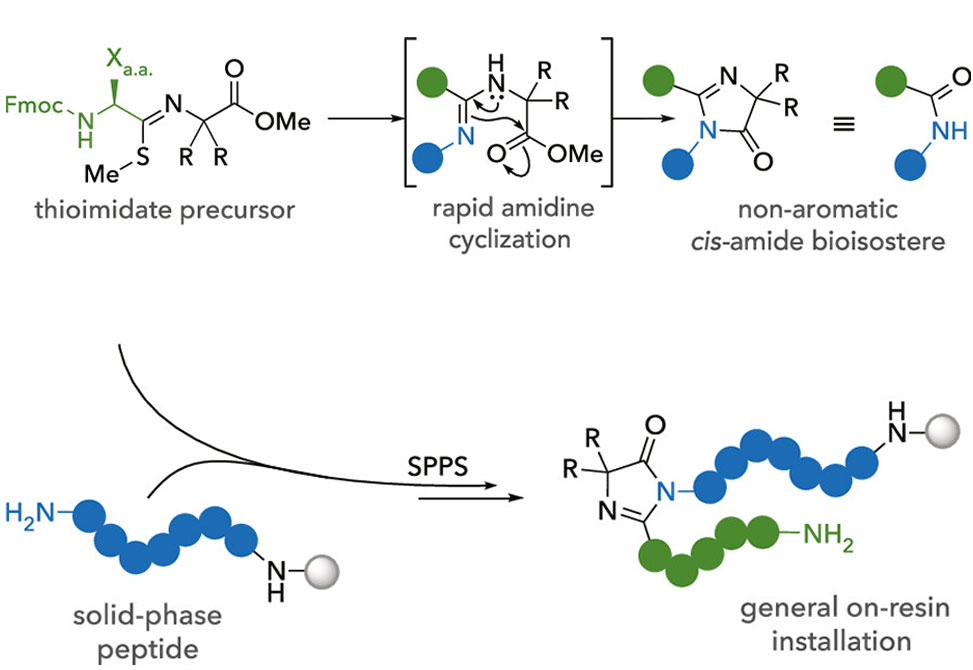
Reflecting recent work in the VanVeller lab
Published in JACS, researchers in the VanVeller Group at Iowa State University, present a tandem amidine installation and cyclization with an...
Peptide Gels
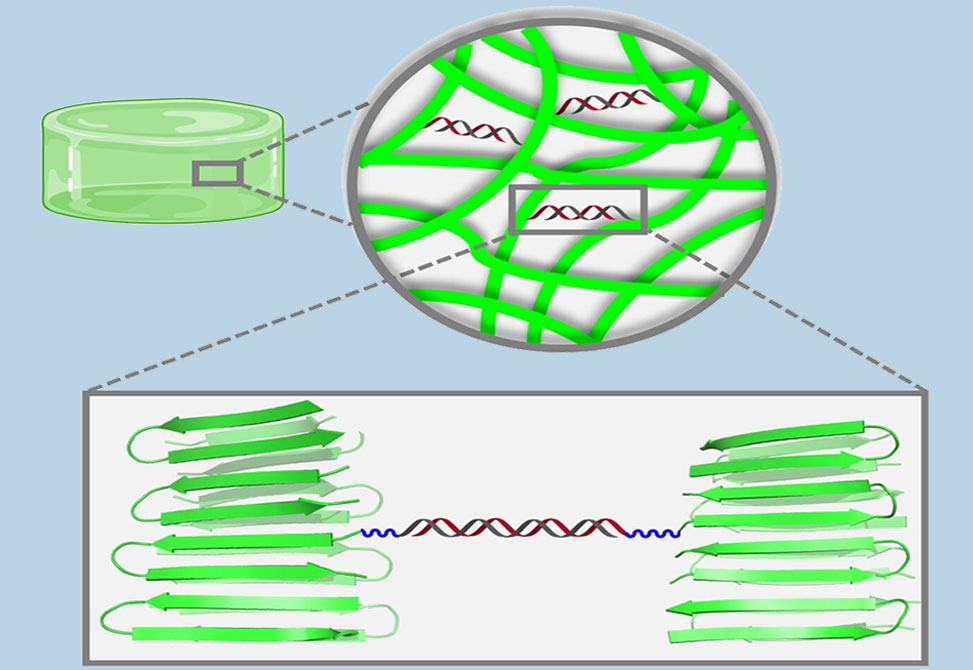
Reflecting recent work in the Schneider lab
Researchers in the Schneider lab, published in Angewandte Chemie, Intl. Ed., discuss how peptide nucleic acids, PNAs, are employed in the design...
Novel Substrate Prediction
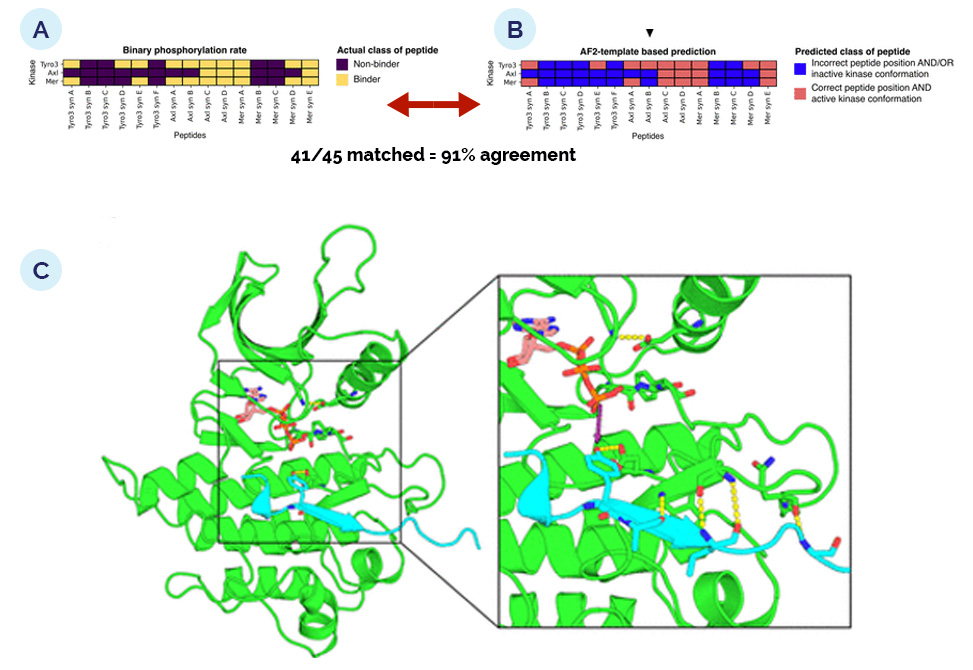
Reflecting recent work in the Parker lab
The TAM family of receptor tyrosine kinases is implicated in multiple distinct oncogenic signaling pathways. However, to date, there are no...
Coiled Coils

Reflecting recent work in the Price lab
Coiled coils are one of most common protein quaternary structures and represent the best understood relationship between amino acid sequence and protein...
Monoclonal Antibodies

Reflecting recent work in the Nowick lab
Monoclonal antibodies, mAbs, that target the β-amyloid peptide, Aβ, are important Alzheimer's disease research tools and are now being...
Novel, Rational Drug Design
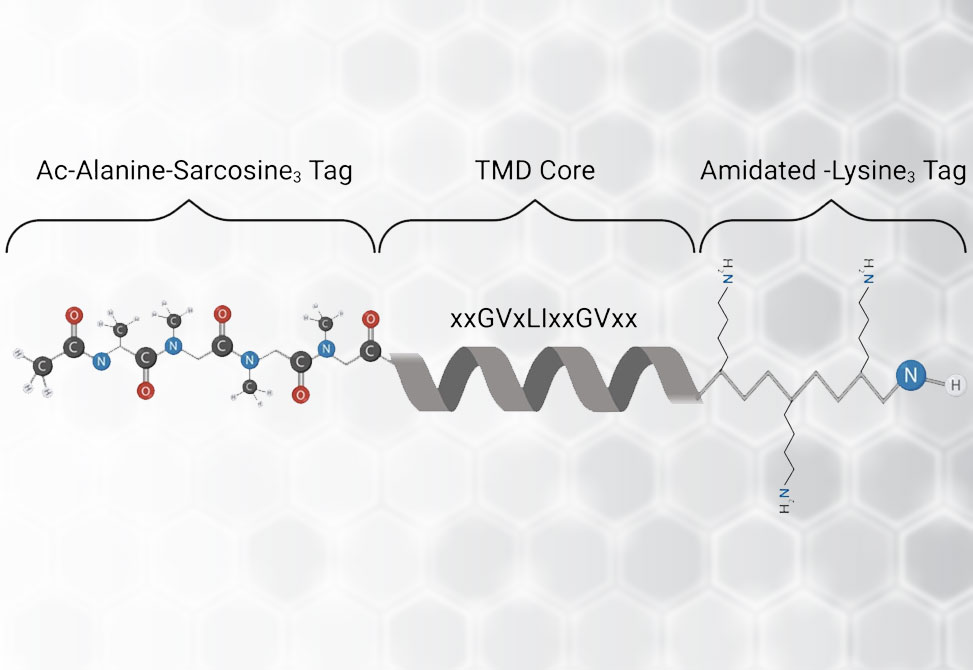
Reflecting recent work in the Deber lab
As an alternative approach to conventional antibiotics, members of the Charles Deber laboratory, published in Peptide Science, explore a novel...
Lasso Peptides
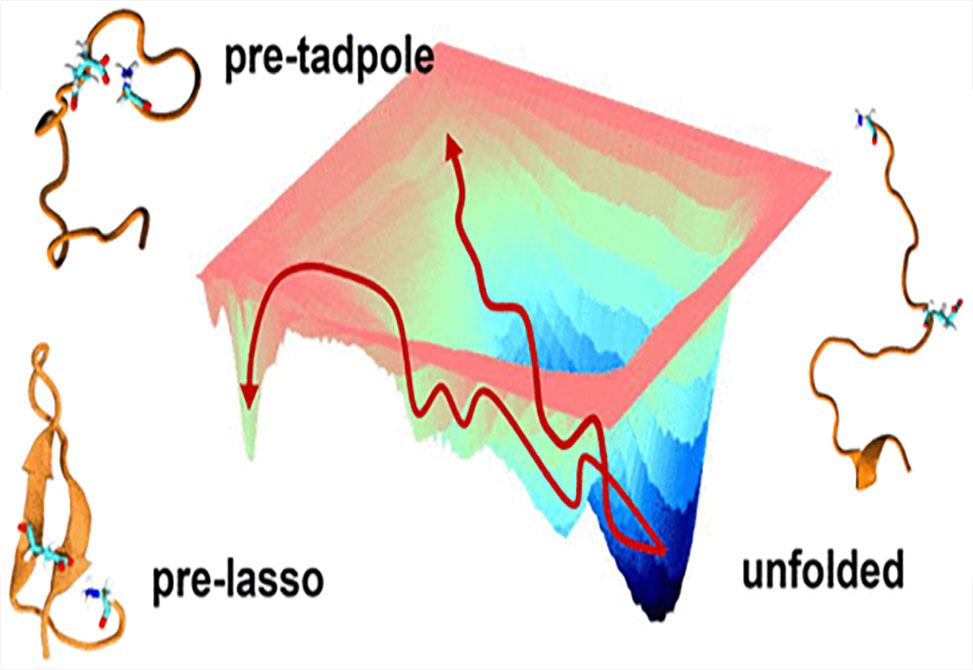
Reflecting recent work in the Swanson lab
Lasso peptides make up a class of natural products characterized by a threaded structure. Given their small size and stability, chemical synthesis would offer tremendous potential...
Alzheimer’s Amyloid-β
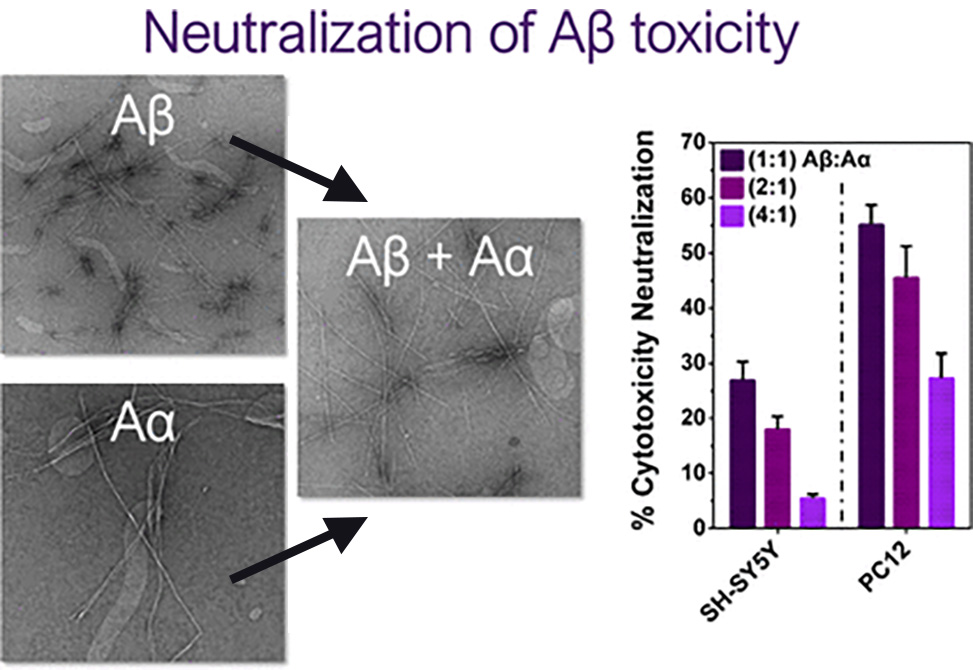
Reflecting recent work in the Raskatov lab
Amyloid aggregation is a key feature of Alzheimer's disease, AD, and a primary target for past and present therapeutic efforts. Recent research is making it increasingly clear...
C–H Radiocyanation
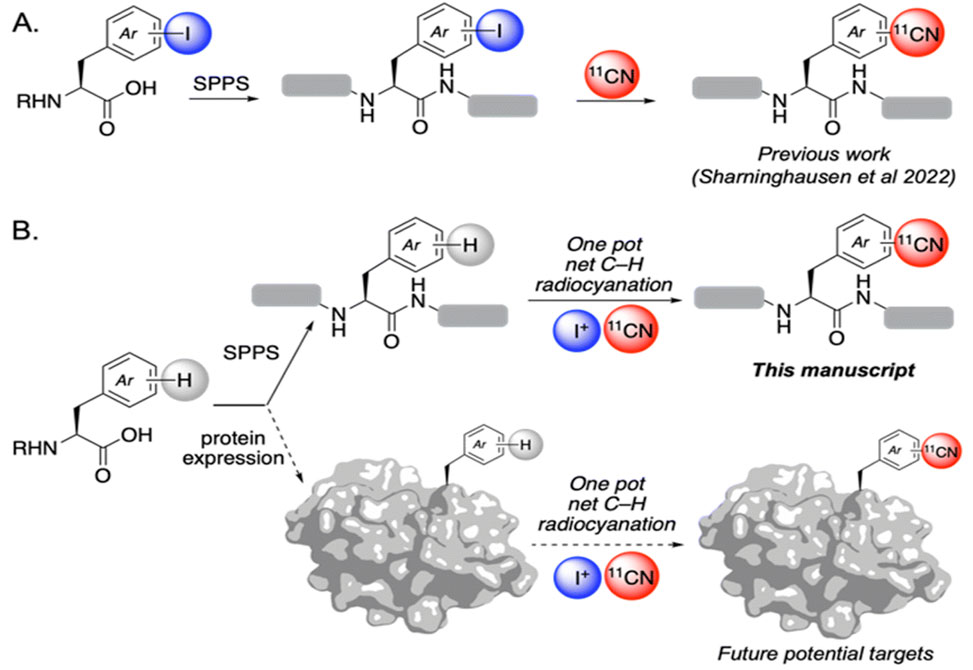
Reflecting recent work in the Mapp and Sanford labs
In a collaborative work, published in Chemical Science, between the Mapp and Sanford groups, and researchers at the Department of Radiology, all at the University of Michigan, authors describe...
α-Helical Peptides
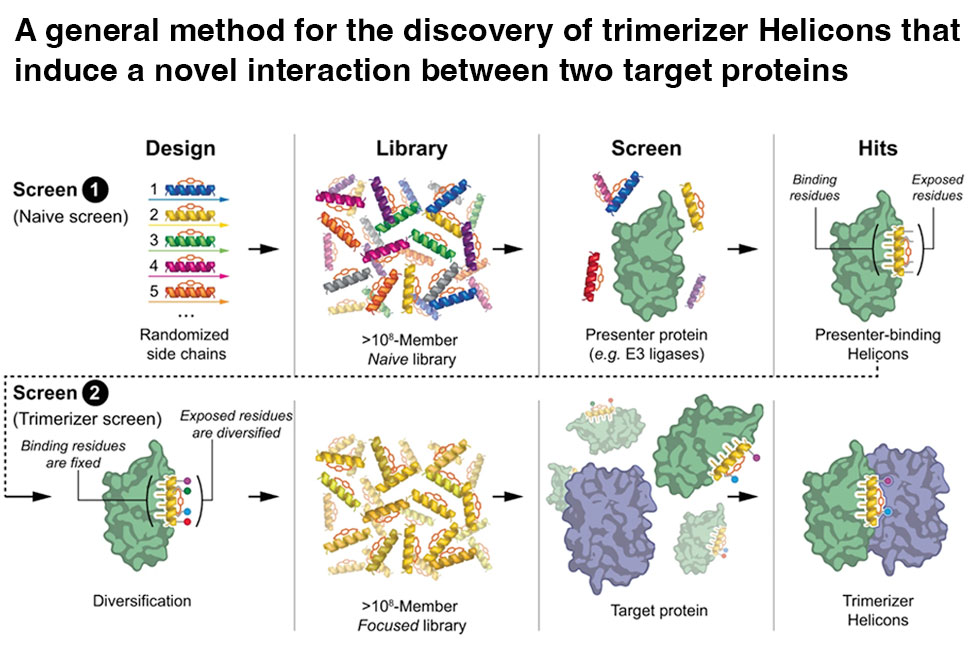
Reflecting recent work from FOG Pharmaceuticals
Molecules that induce novel interactions between proteins hold great promise for the study of biological systems and the development of therapeutics, but their discovery...
Mechanistic Studies of CyClick Chemistry
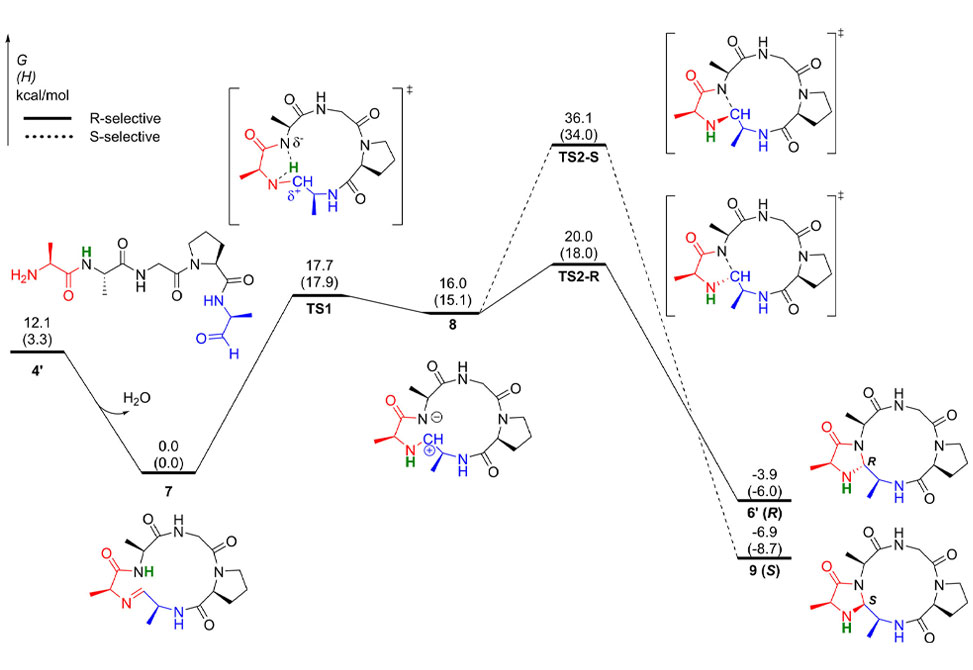
Reflecting recent work in the Raj and Houk labs
Macrocyclic peptides have become increasingly important in the pharmaceutical industry. In collaborative work between the groups of Kendall N. Houk and Monika Raj, published in...
Cytosolic Delivery of Functional Cargoes
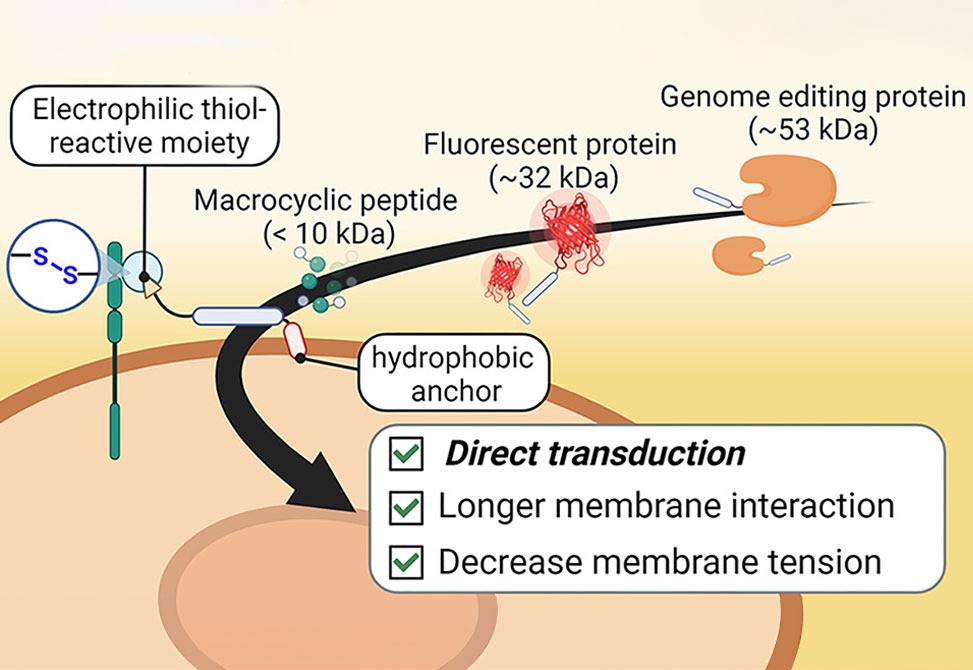
Reflecting recent work in the Hackenberger lab
In research published in JACS, members of the Hackenberger Group, describe a powerful, simple, and highly effective strategy for the intracellular delivery...
Tyrosine Phosphorylation
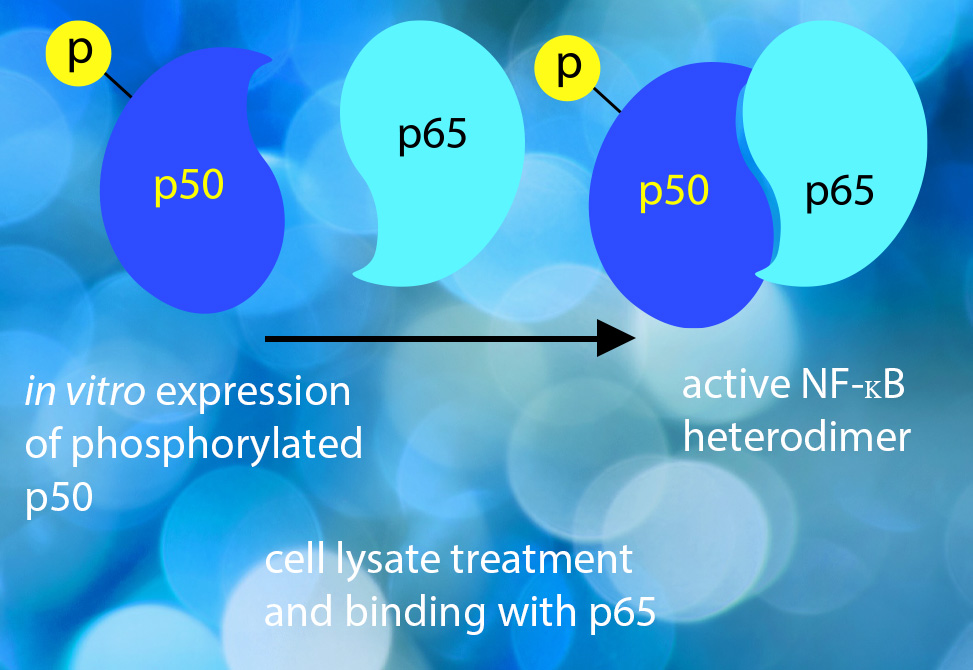
Reflecting recent work in the Hecht lab
The family of NF-κB transcriptional activators controls the expression of many genes, including those involved in cell survival and development. The family consists of...
Pargamicin A
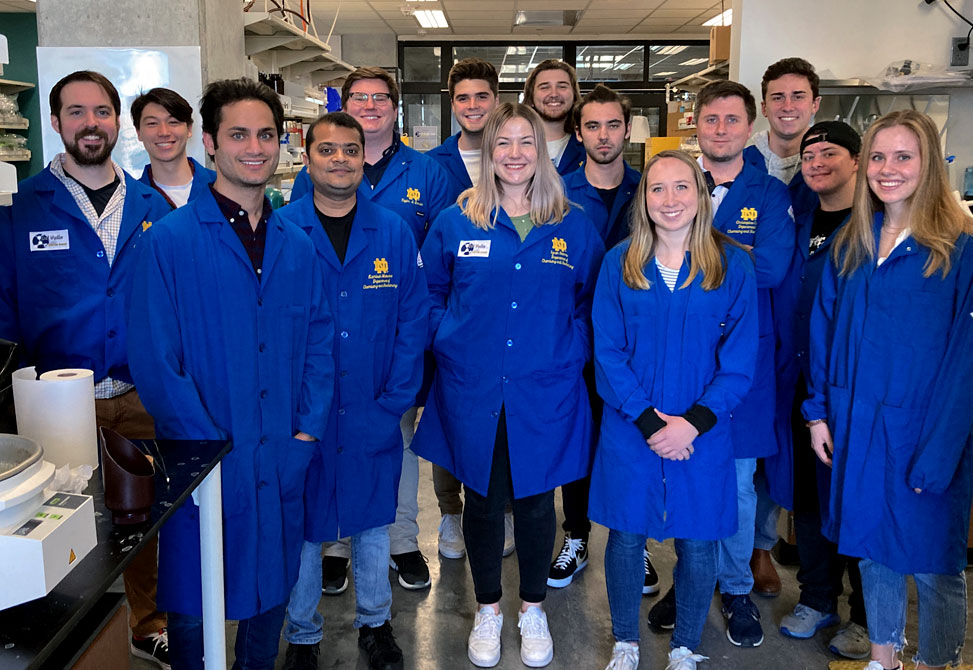
Reflecting recent work in the Del Valle lab
Researchers in the Del Valle Group, published in Organic Letters, report the total synthesis and configurational assignment of pargamicin A, a highly oxidized nonribosomal peptide...
Stereoselectivity

Reflecting recent work in the Wennemers lab
In this article we show that stereoselective peptide catalysis is feasible in complex environments, including cell lysates...
Anticancer Protein

Reflecting recent work in the Bagheri lab
Cancer is one of the leading causes of mortality in the world. Unfortunately, the present anticancer chemotherapeutics display high cytotoxicity...
Ribosomal synthesis

Reflecting recent work in the Suga lab
Aromatic cyclic β2,3-amino acids (cβAAs), such as 2-aminobenzoic acid and 3-aminothiophene-2-carboxylic acid, are building blocks that can induce unique folding...
PKC Disruptors
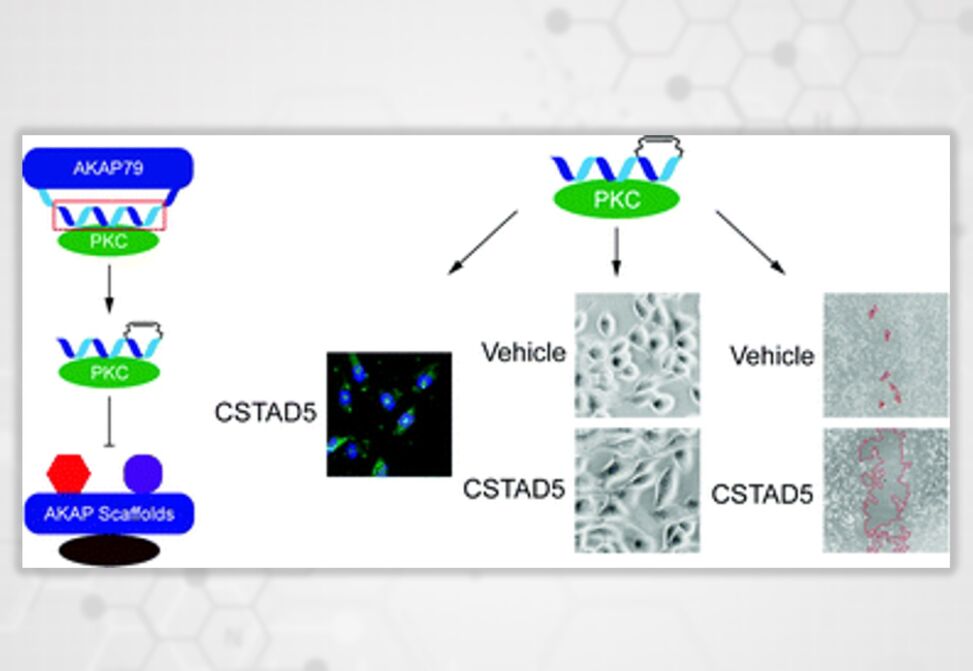
Reflecting recent work in the Kennedy lab
Protein Kinase C (PKC) is a member of the AGC subfamily of kinases and regulates a wide array of signaling pathways and physiological processes...
Protease Inhibitors
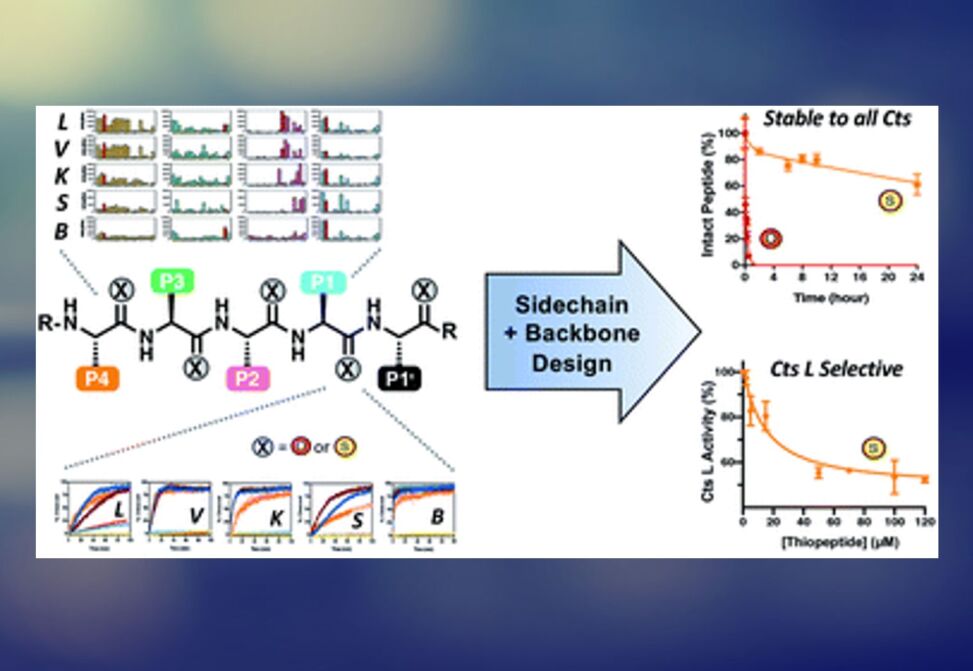
Reflecting recent work in the Petersson lab
Aberrant levels of cathepsin L (Cts L), a ubiquitously expressed endosomal cysteine protease, have been implicated in many diseases such as cancer and diabetes...
Antibacterial Hydrogels

Reflecting recent work in the Schneider lab
Herein, it is demonstrated that a peptide derived from mussel foot protein-5, a key protein in mussel adhesion, displays antibacterial properties, a yet unreported...
Rippled β-Sheet Motif

Reflecting recent work in the lab
In this conspectus, the authors give an overview of the early history of the rippled β-sheet and provide a detailed structural description/definition of this motif...
Ion Channels

Reflecting recent work in the Woolfson lab
The design of peptides that assemble in membranes to form functional ion channels is challenging. Specifically, hydrophobic interactions must be...
Production Technology

Reflecting recent work in the Schwarz lab
The production of peptides as active pharmaceutical ingredients (APIs) by recombinant technologies is of emerging interest. A reliable production platform, however...
Protein Synthesis

Reflecting recent work in the Premdjee lab
Chemical protein synthesis is a powerful avenue for accessing homogeneously modified proteins, but access to large targets has proved challenging...
Peptide-Based Vaccines

Reflecting recent work in the Lai lab
In this Review, the authors discuss peptide-based vaccines and their potential in three therapeutic areas: infectious disease, Alzheimer’s disease, and cancer...
Stapled Peptides

Reflecting recent work in the Han lab
Diabetes is characterized by pancreas dysfunction and is commonly associated with obesity. Hypoglycemic agents capable of improving β-cell function...
Endosomal Escape

Reflecting recent work in the Futaki lab
Endocytic pathways are practical routes for the intracellular delivery of biomacromolecules. Along with this, effective strategies for endosomal cargo release...
Oxime Ligation

Reflecting recent work in the Burke lab
The current review will focus on the authors’ use of peptide ligation to optimize PPI antagonists directed against several targets...
Cyclic Peptide Ligands

Reflecting recent work in the Suga lab
Herein is identified three cyclic peptide ligands of K-Ras(G12D) using an integrated in vitro translation−mRNA display selection platform...
Peptidomimetic Uptake

Reflecting recent work in the Arora lab
Researchers in the Arora Lab observed that the cellular uptake of peptides is critically determined by the cell line-specifically, they noted that peptides show better uptake...
Membrane-Lytic Peptides

Reflecting recent work in the Schneider lab
Herein is described the use of peptide backbone N-methylation as a new strategy to transform membrane-lytic peptides (MLPs) into cytocompatible intracellular delivery vehicles...
Frog-skin Peptides

Reflecting recent work in the Craik lab
In this study, the researchers investigated naturally occurring peptides derived from frog skin secretions for selectivity and activity toward melanocortin receptors...
Coronavirus Inhibitors

Reflecting recent work in the Hoffman lab
The novel coronavirus disease COVID-19 that emerged in 2019 is caused by the virus SARS CoV-2 and named for its close genetic similarity to SARS CoV-1...
Targeting Malaria

Reflecting recent work in the Kennedy lab
Herein is a review of ongoing research aimed at developing constrained peptides targeting protein-protein interactions pertinent to malaria pathogenesis.
Stapled Peptide

Reflecting recent work in the Garner lab
Eukaryotic translation initiation factor 4E (eIF4E) has emerged as a promising cancer therapeutic target due to its role in the initiation of cap-dependent translation...
Peptide Hydrogels

Reflecting recent work in the Schneider lab
Herein, a noninteracting multiphase molecular assembly approach is developed to crystallize tofacitinib, a potent JAK1/3 inhibitor, within a shearthinning self-assembled fibrillar peptide hydrogel network...
Modified Amino Acids
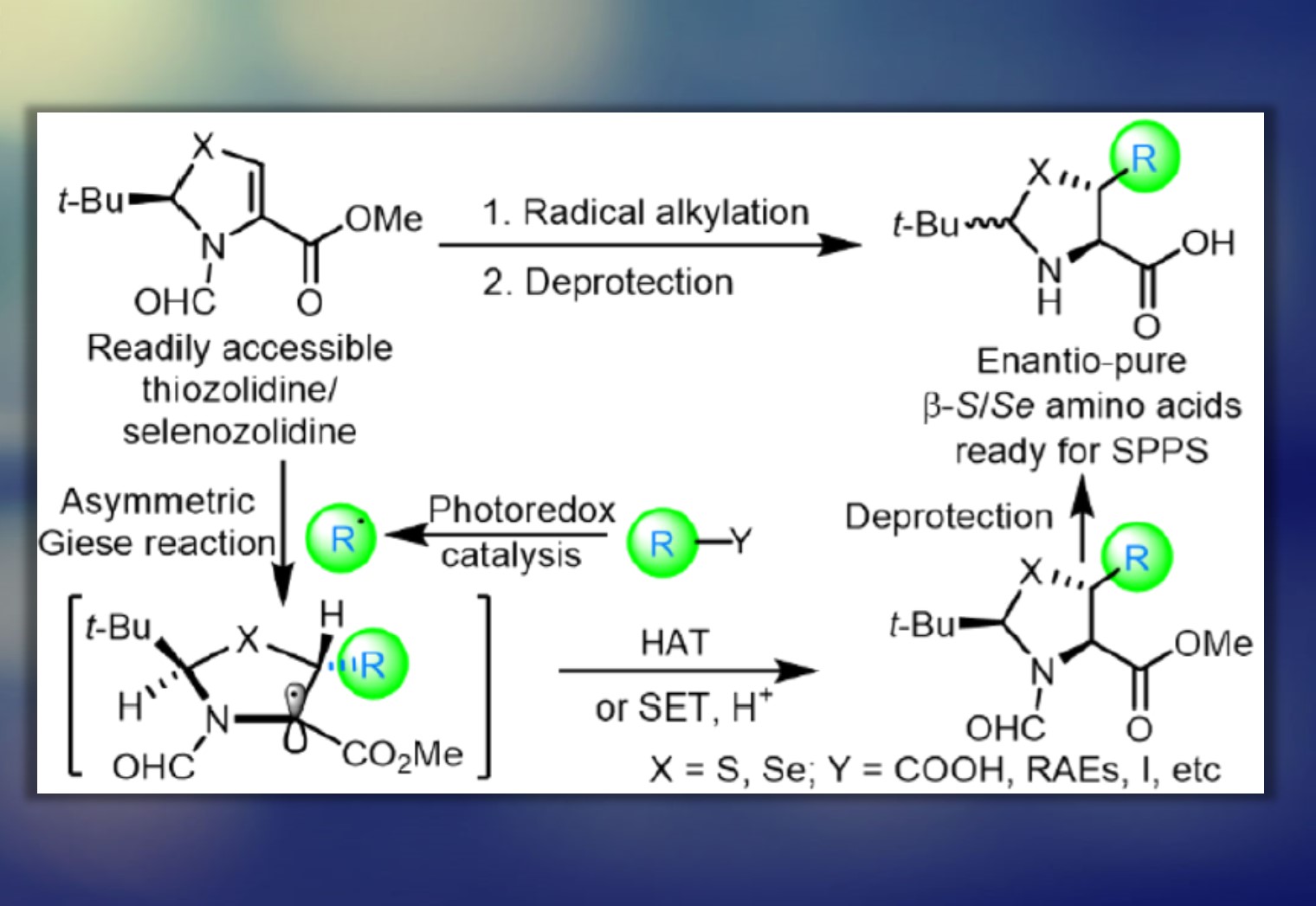
Reflecting recent work in the Wang lab
Herein, Wang et al. present a photoredox-catalyzed asymmetric method for the preparation of enantiopure β-thiolated/selenolated amino acids using a simple chiral auxiliary...
Mapping SARS-CoV-2

Reflecting recent work in the Ng lab
Given the ongoing SARS-CoV-2 pandemic, identification of immunogenic targets against the coronavirus spike glycoprotein will provide crucial advances towards the development of diagnostic tools...
Micelle-assisted Reactions

Reflecting recent work in the Devaraj lab
This publication shows that micelle-assisted reaction can facilitate native chemical ligations between a peptide-thioester and a Cys-peptide modified by a lipid-like moiety...
Chemical Protein Synthesis

Reflecting recent work in the Mandal lab
Herein is reported an operationally simple method to facilitate chemical protein synthesis by fully convergent and one-pot native chemical ligations...
Fluorescent Peptide

Reflecting recent work in the Nowick lab
Teixobactin is a nonribosomal antibiotic peptide that inhibits the biosynthesis of peptidoglycan and teichoic acid, however, teixobactin’s cellular site of action is unknown...
Constrained Peptides
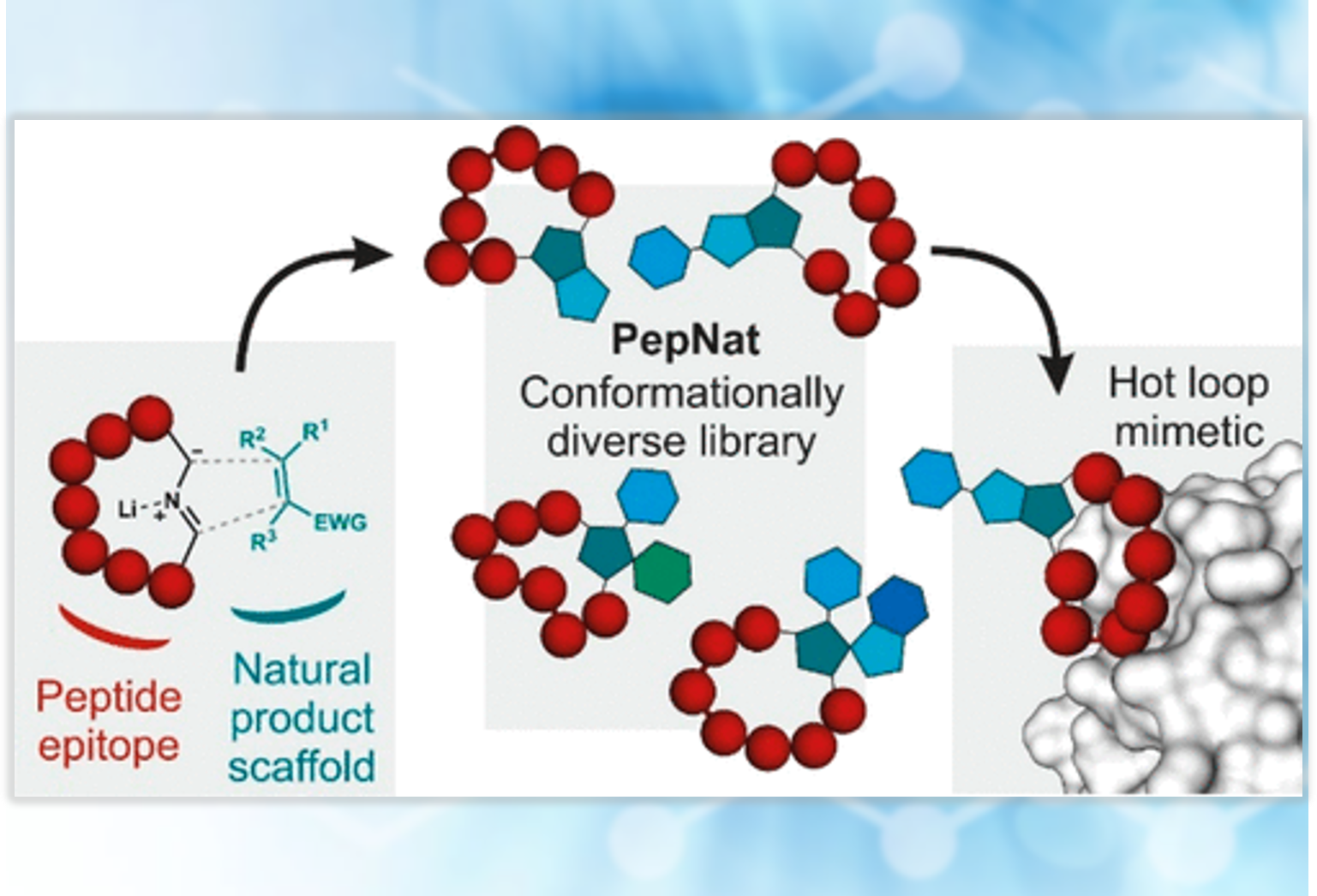
Reflecting recent work in the Waldmann lab
Guéret and colleagues describe a versatile method for inserting chiral motifs between the ends of omega loops. Peptides are synthesized using traditional SPPS...
C1B1 Inhibition

Reflecting recent work in the Pearce lab
In this recent publication, Puhl et al. have employed random peptide phage display to screen and select peptides that bind to the calcium and integrin binding protein 1 (CIB1)...
Aqueous SPPS

Reflecting recent work in the Kolmar lab
The growing interest in synthetic peptides has prompted the development of viable methods for their sustainable production. Currently, large amounts of toxic solvents are required for peptide assembly...
Improved Thiol Protection
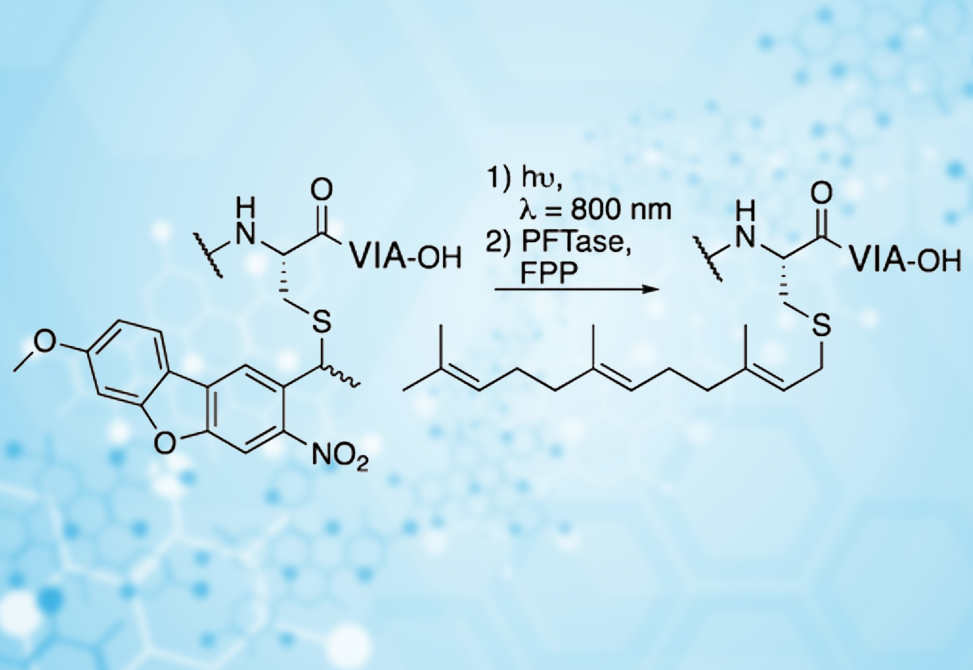
Reflecting recent work in the Distefano lab
Photoremovable caging groups are useful for biological applications because the deprotection process can be initiated by illumination with light without the necessity of adding additional reagents...
Peptide Self Assembly
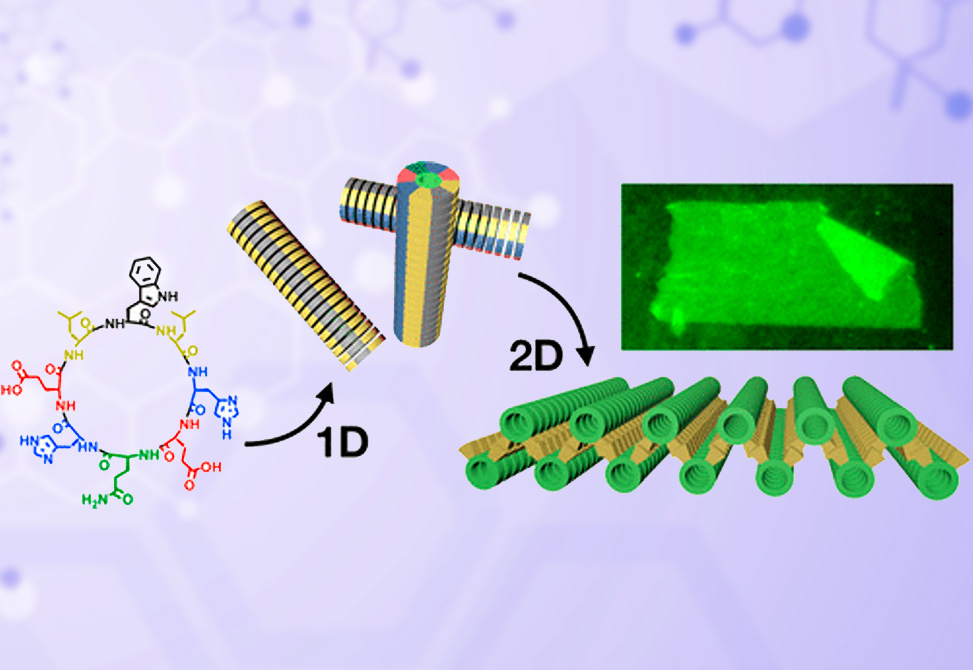
Reflecting recent work in the Montenegro lab
Despite recent developments in two-dimensional self-assembly, most supramolecular 2D materials are assembled by tedious methodologies, with complex surface chemistry and small sizes...
Nanosheet Fabrication

Reflecting recent work in the Conticello lab
Engineering free-standing 2D nanomaterials with compositional, spatial, and functional control across size regimes from the nano- to mesoscale represents a significant challenge....
Hydrophobic Moieties

Reflecting recent work in the Wennemers lab
Trans amide bonds and fast cis–trans isomerization of Xaa-Pro bonds are crucial for the stability and folding rate of collagen, the most abundant protein in mammals...
Ghost Peptides
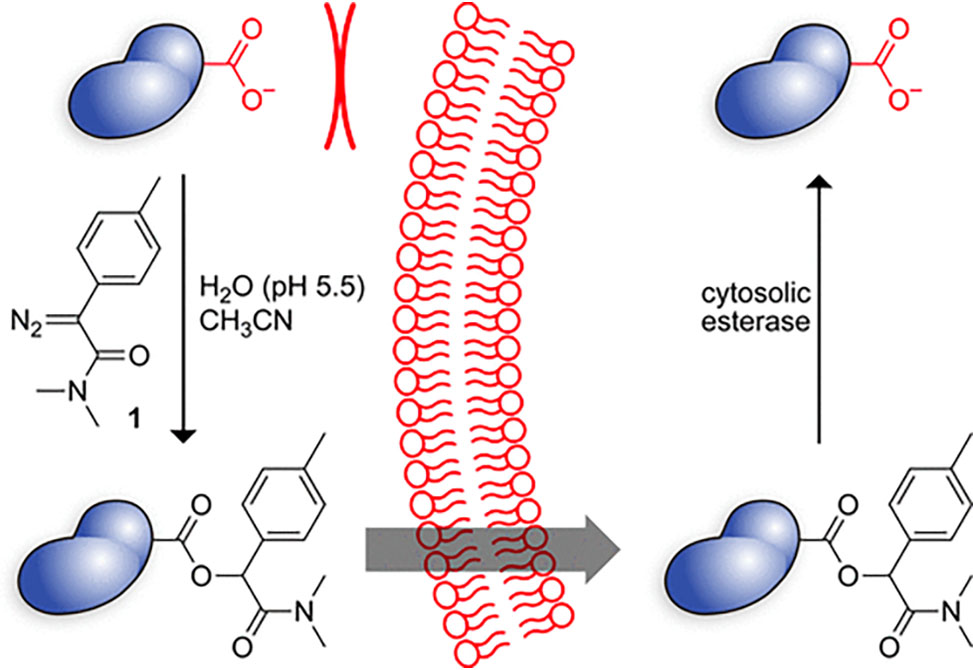
Reflecting recent work in the Raines lab
A major hurdle in chemical biology is the delivery of native proteins into the cytosol of mammalian cells. Published in ACS Chemical Biology, and presented...
Octreotide Analogs

Reflecting recent work in the Papini lab
Somatostatin, SS, is a cyclic tetradecapeptide able to inhibit the release of growth hormone, GH, mainly through the binding to two G‐protein coupled...
Roads to Rome

Reflecting recent work in the Schmidt lab
Ribosomally synthesized and post-translationally modified peptides, RiPPs, are ubiquitous natural products. Bioactive RiPPs are produced from a precursor...




